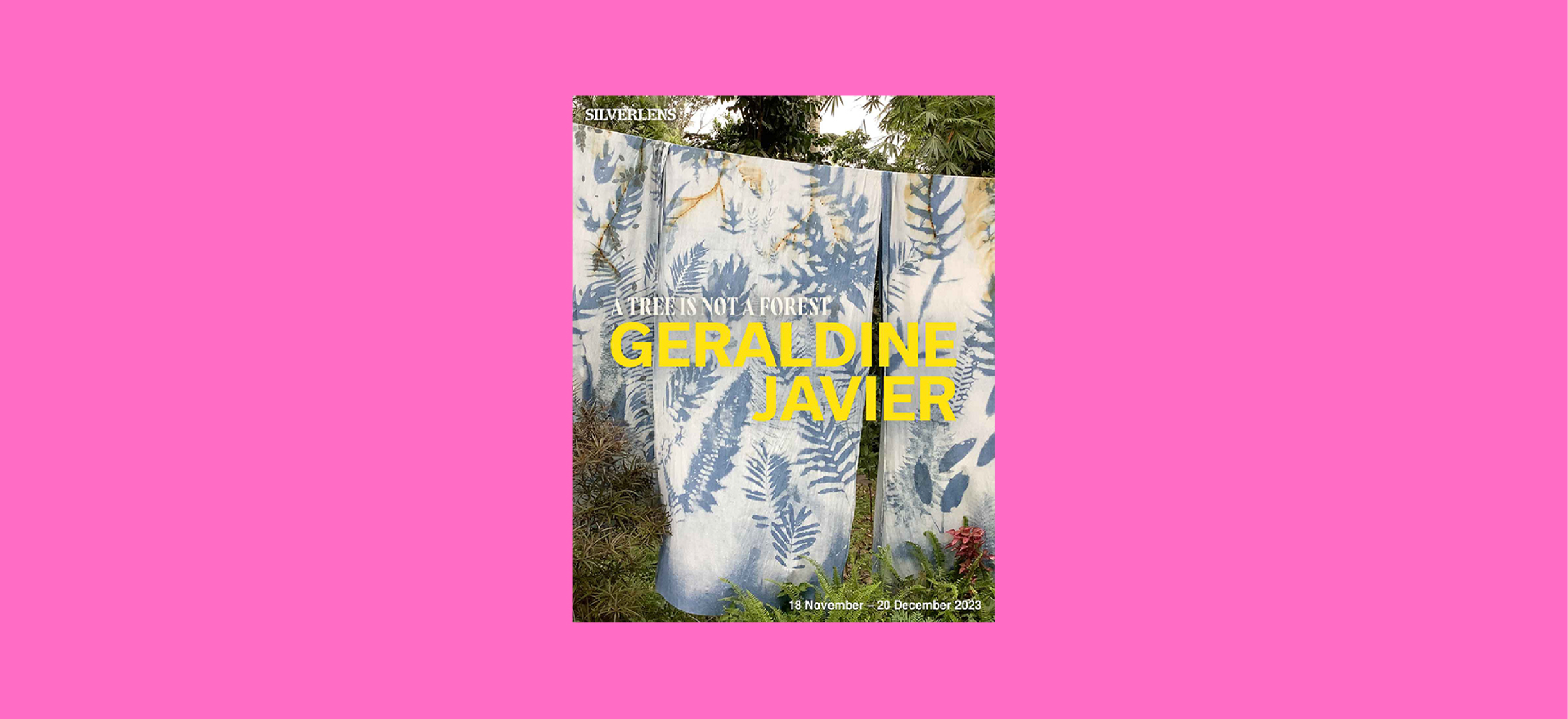
A Tree is Not a Forest
Geraldine Javier
Silverlens, Manila
Video
About
A Tree is Not a Forest
Geraldine Javier tends to her organic farm every day. Since moving here in 2013, she has become a daily witness to the symbiosis of organisms, the behaviors of animals, the processes of nature. As an artist-farmer, it was inevitable she would experiment with pigments from her natural surroundings as a potential for telling stories.
Portraits of Four Important Naturalists
Geraldine’s recent investigations have expanded to the work of historically significant naturalists. David Attenborough (1926), Maria Sibylla Merian (1647-1717), Leonard Co (1953-2010), and Jane Goodall (1934) are among the most significant scientists who have enlightened our understanding of the planet.
Best known for narrating award-winning documentaries for the BBC, Sir David Attenborough is also a broadcaster, an author, a biologist, an environmental conservationist, and for seven decades has trekked through unchartered wilderness to film the rarest creatures and some of the most remote people on earth. For his portrait, Geraldine has chosen to focus on one of his greatest honors: a number of species have been named after him and she painted seven of them to surround him.
Why would Geraldine be interested in the names of species? A group show she participated in gives us a good reason. Phylogeny of Desire (2022) was organized as a tribute to the late Filipino field botanist and plant taxonomist Dr. Leonard Co. He was the foremost authority in local ethnobotany—the study of how people of a particular culture and region make use of indigenous plants. The exhibit was curated by Co’s protégé Ronald Achacoso, who writes in the exhibition notes:
“Co was a consummate scientist who expressed the need for art in botany and its vital role in curing ‘plant blindness,’ a seemingly contemporary urban malaise. Plant blindness is the inability to see or recognize the presence of plants in our surroundings and our incapacity to acknowledge its invaluable role in our environment.” Geraldine’s work is a superb example of how artists can address plant blindness. For Co’s portrait, she added a list of names from his book Common Medicinal Plants of the Cordillera Region and from a book that pays tribute to him, Philippine Native Trees 303.
Like the pioneering entomologist Maria Sibylla Merian, Geraldine’s recent investigations begin in her own backyard. At only 13 years old, Merian started studying insects in her garden. She was fascinated with metamorphosis—the transformations that occur within insects’ life cycles. Her artworks depicted living creatures, including the insects’ host plant. At age 52, in the year 1699, Merian sailed from Europe to the Dutch colony of Surinam in South America. Geraldine greatly admires this endeavor as a rare and dangerous expedition for women at that time. There, Merian made her landmark work of 60 engraved plates with lively text descriptions. Geraldine pays homage to this incredible accomplishment by painting Merian’s portrait along with the entomologist’s outstanding scientific illustrations.
The three portraits discussed above are paintings, rendered in the acrylic and encaustic canvases that Geraldine is most celebrated for. She brings to these paintings a delightful variety of materials and techniques: layers of paint and encaustic medium, the lush shimmery effects of gold powder, and etching with the use of a needle. All of these converge in hauntingly beautiful, masterfully composed paintings.
The fourth portrait is a fabric work with embroidery, appliqué and ecoprinting. Geraldine made a triple portrait of Jane Goodall, cleverly portraying the primatologist at what she does best-- closely interacting with her beloved apes. Goodall’s 60 years’ work with chimpanzees not only gave remarkable insight on apes; she also redefined species conservation to include the needs of local people and the environment.”
What’s in a Name?
For the three fabric works in the series What’s in a Name? Geraldine explores some processes for the first time. Foremost of these is ecoprinting.
Ecoprints are made by transferring the colors, shapes, and details of leaves and flowers onto fabric or paper. Through steaming, the natural pigments are contact printed onto surfaces, making unique impressions called monotypes. It is a form of natural dyeing. Evidence suggests that textile dyeing was practiced since the dawn of humanity, yet Geraldine was surprised to realize that to this day, there is still very little research on using our Philippine local plants for dyeing. In recent years, Geraldine introduced an additional 400 native flora into her property and spent months sampling many of them for ecoprinting and mordanting.
Relating back to Leonardo Co’s knowledge of the names of plants, Geraldine also embroidered scientific names on the fabric works, “to force myself to remember them,” she says. She took names from the Pictorial Encyclopedia of Philippine Ornamental Plants (2nd edition, by Dr. Domingo Madulid) and A Guide to Families of Common Flowering Plants in the Philippines (by Dr. Irma Remo Castro).
Life Cycle Series & Humans as Predators
“I confront the fear of death and accept that after death, we become part of an ecosystem that supports new life.” --Geraldine Javier
In the Life Cycle Series, fabric works feature embroideries of skeleton figures or parts, depicted with intricate, lace-like patterns. Before becoming an artist, Geraldine trained as a nurse and has continued her keen interest in anatomical illustrations. The skeletons are coupled with elaborately embroidered mushrooms, root systems and the elephant foot yam—a perennial herb that used to abound in Geraldine’s backyard until humans started habituating amongst them. Eventually, they slowly disappeared. This led her to wonder, “Maybe some species cannot co-exist with human presence.” Her concern for species extinction also extends to a 24-piece textile installation featuring cyanotype images of eight endangered animals in the Philippines. The fabrics are also rust dyed, indigo-dyed and chlorinated.
Installed with them are the Humans as Predators fabric works Terminator 1 and Terminator 2. Geraldine embroidered human skeletons with wings: one with dragonfly wings, representing the dragonfly as an apex predator, and another with skeletonized leaves attached as wings. These are hybrid creatures. Over a decade ago, Geraldine had already begun to imagine the possibility of hybrid species. In 2012, she made such creatures during a four-week residency at the Singapore Tyler Print Institute.
New Species in an Anthropocene Era
New Species in an Anthropocene Era are works on paper that directly take off from Geraldine’s STPI residency exhibition, Playing God in an Art Lab. She presented fictional creatures--hybrids of skeletal parts, flora, and fauna. STPI states, “While their futuristic anatomy hints at life forms beyond present day, their fossilization simultaneously suggests history and the end of life, echoing both the promise of progress and the inevitability of death. The paradox in these charming blends of botany, zoology and the whimsical invite viewers to ponder the origins of existence and one’s place in this realm of God’s making.”
Tony Godfrey’s essay Sixteen Creatures in Search of Their Species likens Geraldine’s hybrid creatures to the fantastical beasts in medieval bestiaries. I would further suggest that they could also be compared to the mysterious plant illustrations in the Voynich Manuscript. To this day, historians, linguists and cryptologists are unable to decipher the manuscript and verify if its richly illustrated plants actually existed. I imagine that archeologists and scholars of the future would also be confounded by Geraldine’s peculiar creatures.
On the artist’s penchant for conceiving invented species, Tony writes in the same essay: “Geraldine Javier is both a maker and a storyteller. As a painter, she normally tells—or rather implies—a story; as a maker of fabric works, she is, above all, a maker. Both disciplines are rooted in her early career when she was above all else a collagist—one who made stories, albeit incomplete ones, from scraps.”
**********
Peter Wohlleben, author of The Hidden Life of Trees, writes that trees in a forest communicate with and support each other. He reminds us that a forest is not just made of trees but of thousands of species that the trees depend on and vice versa.
Like the dynamics of a forest, Geraldine works with her local community, training them to be organic farmers and studio assistants. It is her goal to provide them with regular income by finding ways to incorporate their skills into the making of her artworks. With her team, she also produces art objects, the sales proceeds of which go directly to her workers. For this exhibit, Geraldine has an exciting new collaborator: the plants around her. To such a degree, both human and non-human relationships surrounding Geraldine are utterly symbiotic.
Most affecting about the evolution of Geraldine’s art is a restlessness with mastery. She sets herself up as a constant beginner by venturing into techniques she has never attempted before. Like the great naturalists, her life is filled with endless wonder and discovery. Responding to illustrious giants in their field becomes both her challenge and her inspiration. Today, arguably in her prime, Geraldine has fully embraced being an artist-farmer, in which reciprocity and interconnectedness define her world.
– Stephanie Frondoso
Geraldine Javier (b. 1970 in Makati City, Philippines; lives and works in Batangas, Philippines) is one of the Philippines’ most important and collected contemporary artists. With a Nursing degree from the University of the Philippines that included a top rank in the licensure exams, she took a second university degree in Fine Arts, and pursued an art practice. Since 1995, she has held more than 30 solo exhibitions in the Philippines, Malaysia, South Korea, Singapore, Germany, and China. From 1999 to 2003 she was a member of the Surrounded By Water collective. Much of her early work was in collage form, but it was with paintings that she established her reputation as an inventive artist. These were characterized by either melancholy or wit: death and childhood were frequent subject matters. By 2008, she was making fabric works with the paintings and combining them in installations; exhibitions were a mixture of paintings, installations and objects. Paintings would often have collaged elements, notably preserved beetles and butterflies. In 2013, she moved south from Manila to the countryside in the district of Batangas. Her work increasingly dealt with our relationship with nature. Current projects often involve the participation of the women in the community where she lives. In 2019 she exhibited at the Havana Biennial. Around this time, she began exploring two new forms of painting: palimpsestic and encaustic (with use of blowtorch).
Installation Views
Portraits of Four Important Naturalists
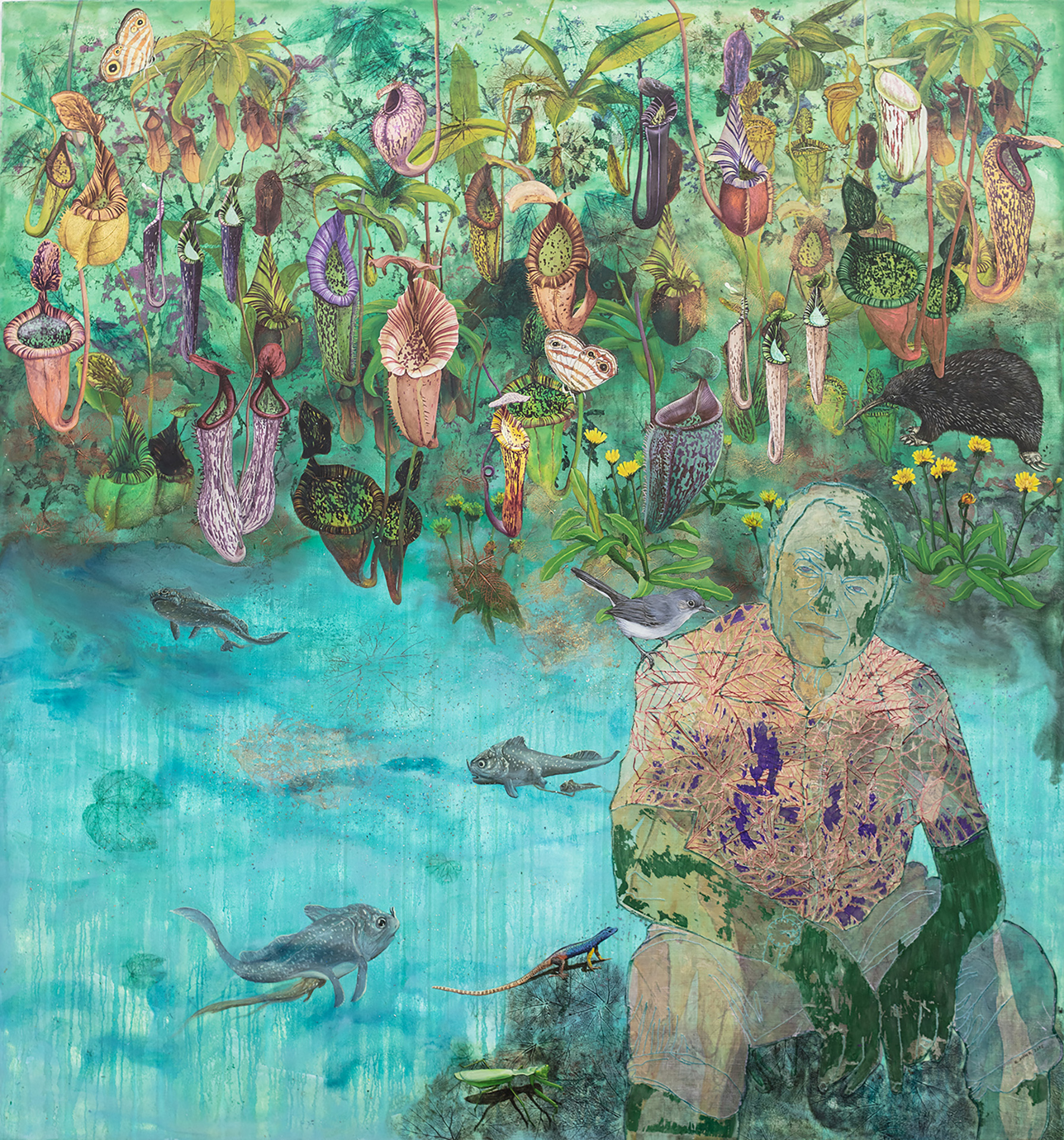
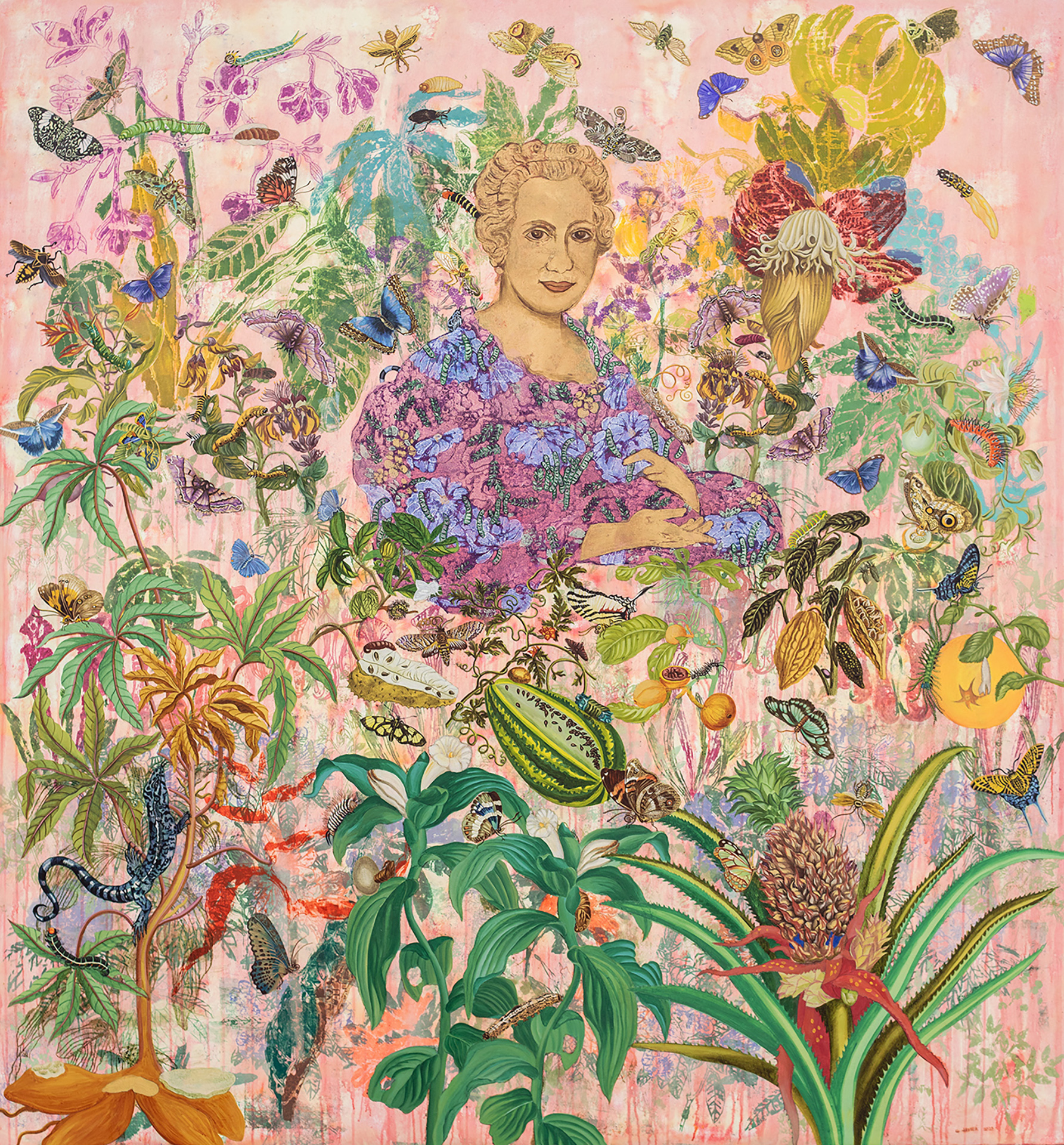
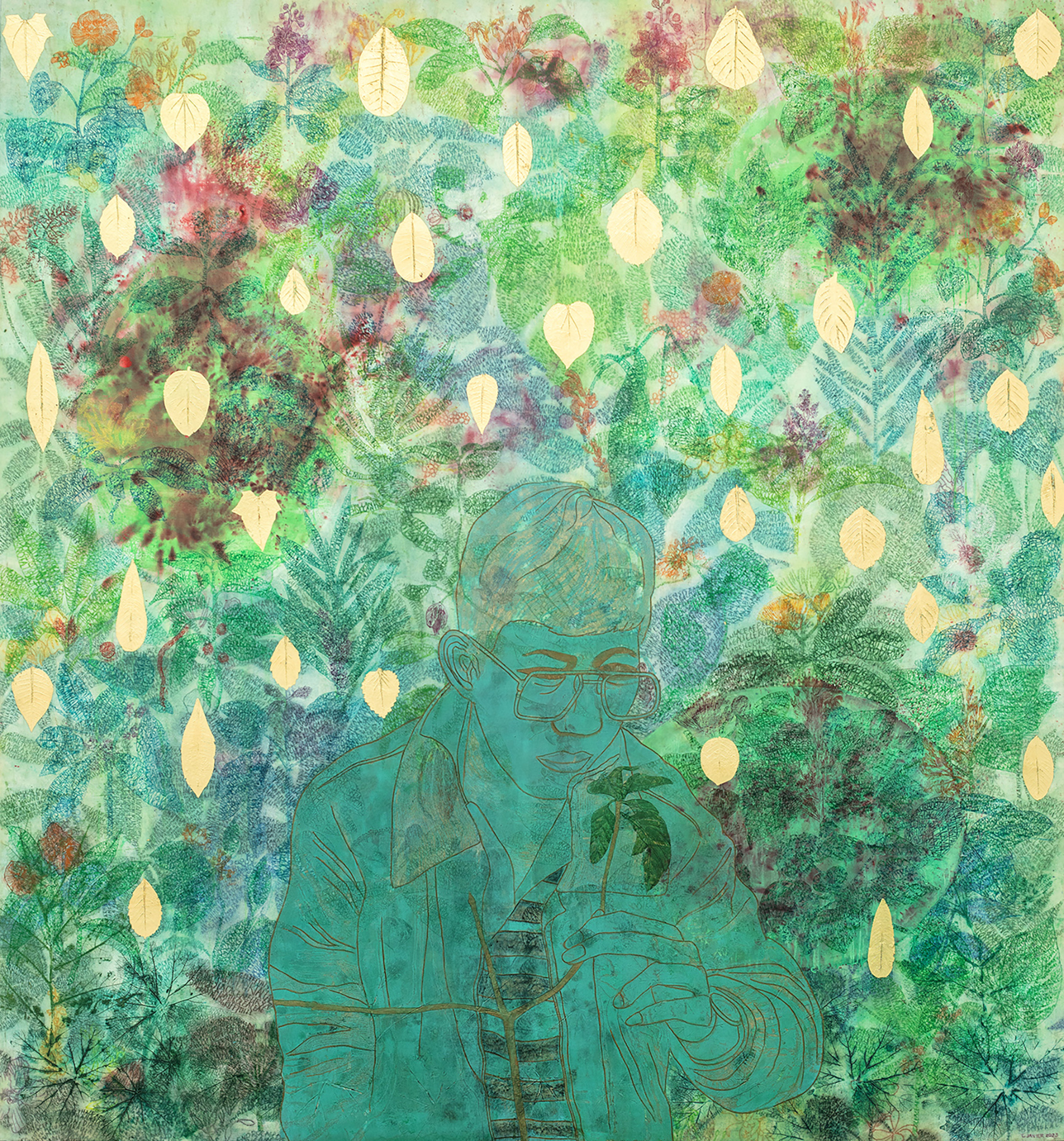
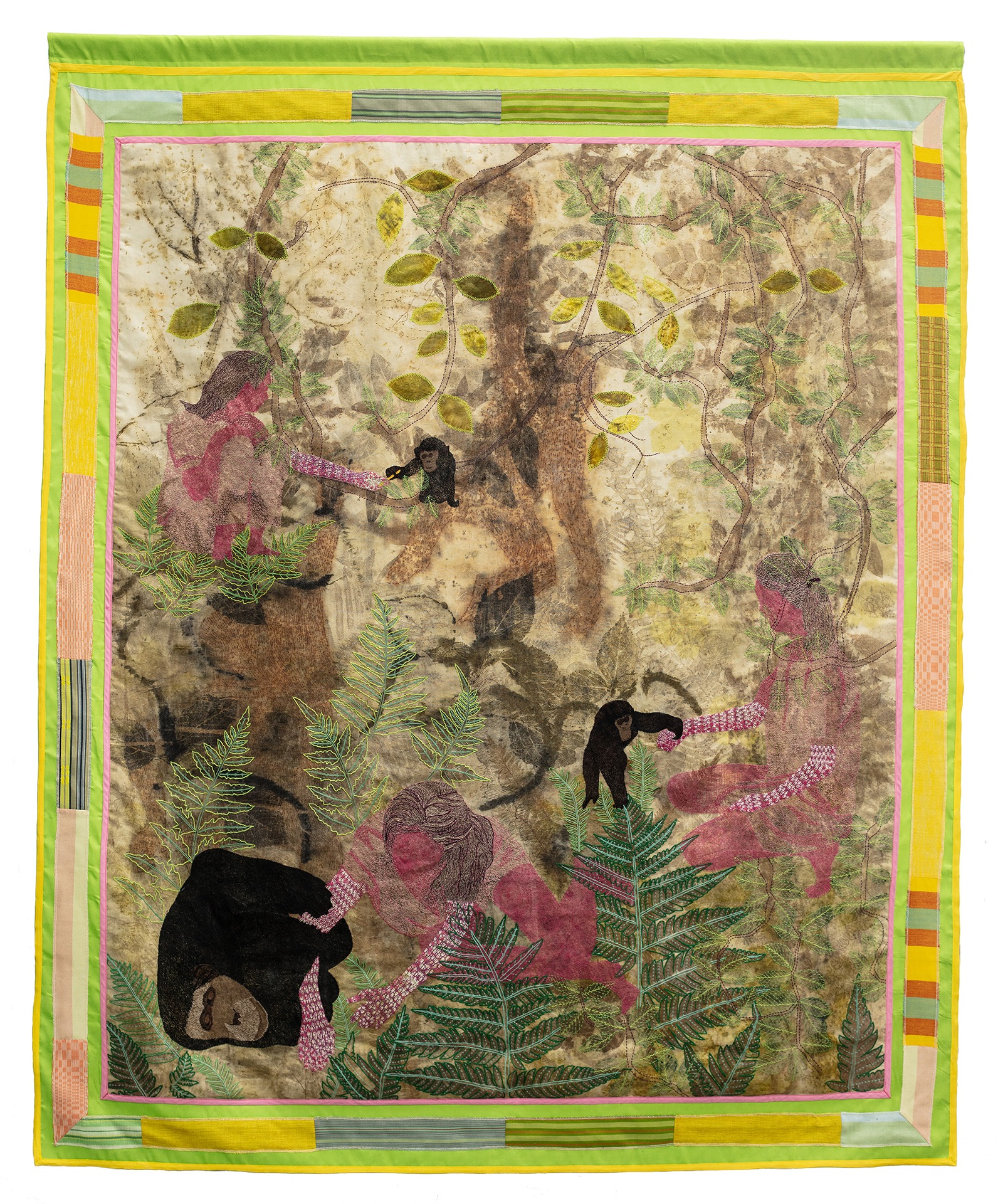
What’s in a Name?
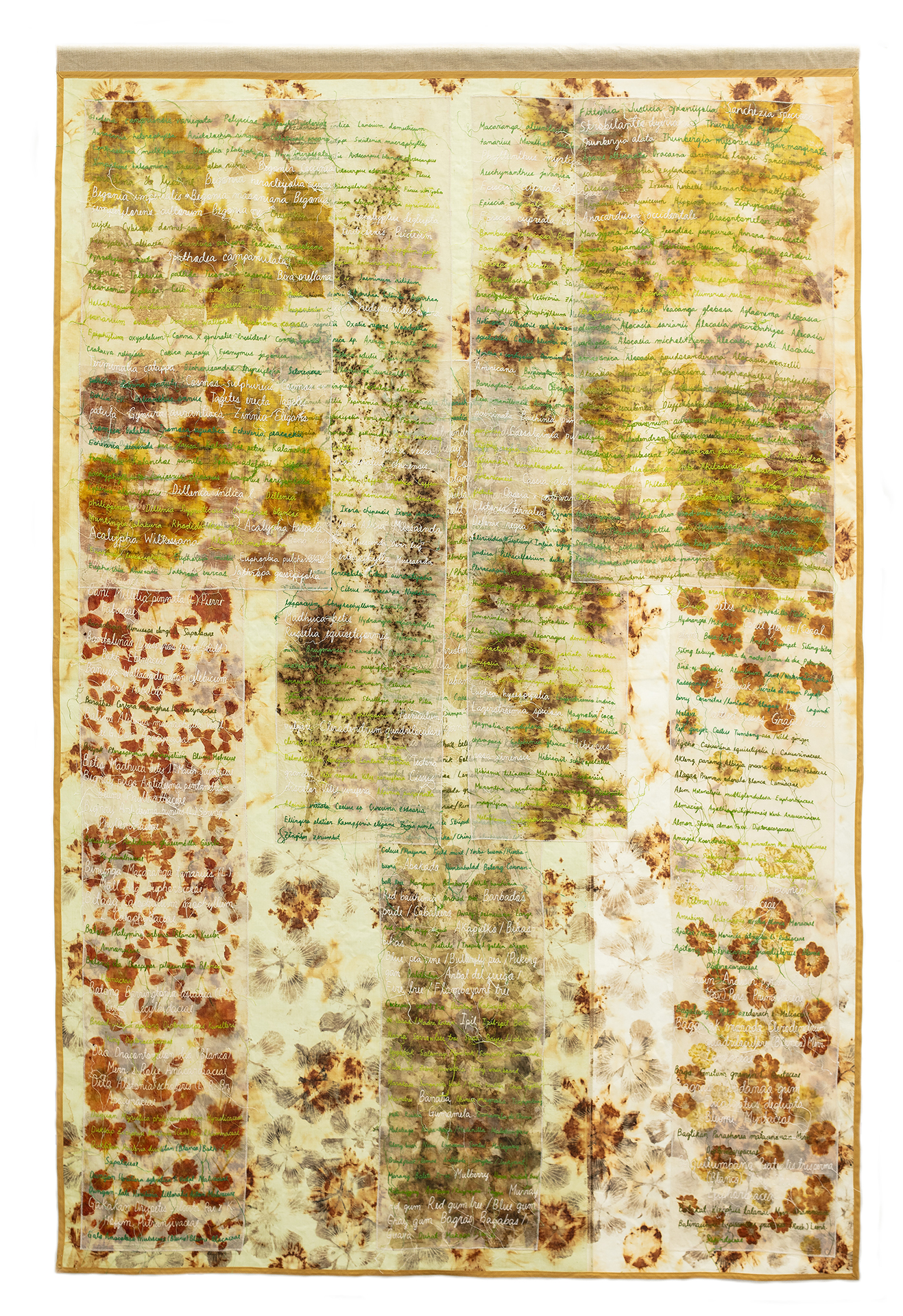
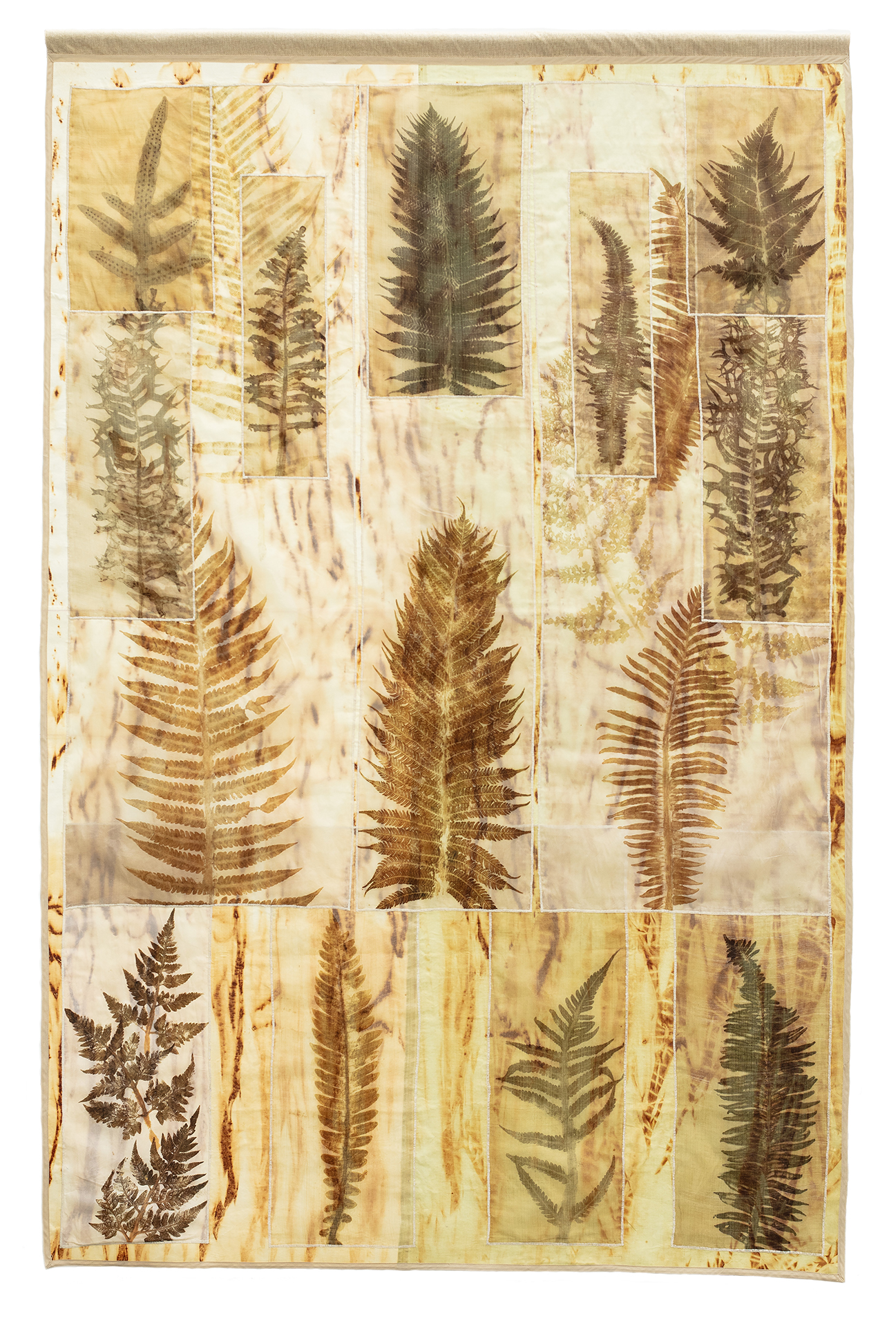
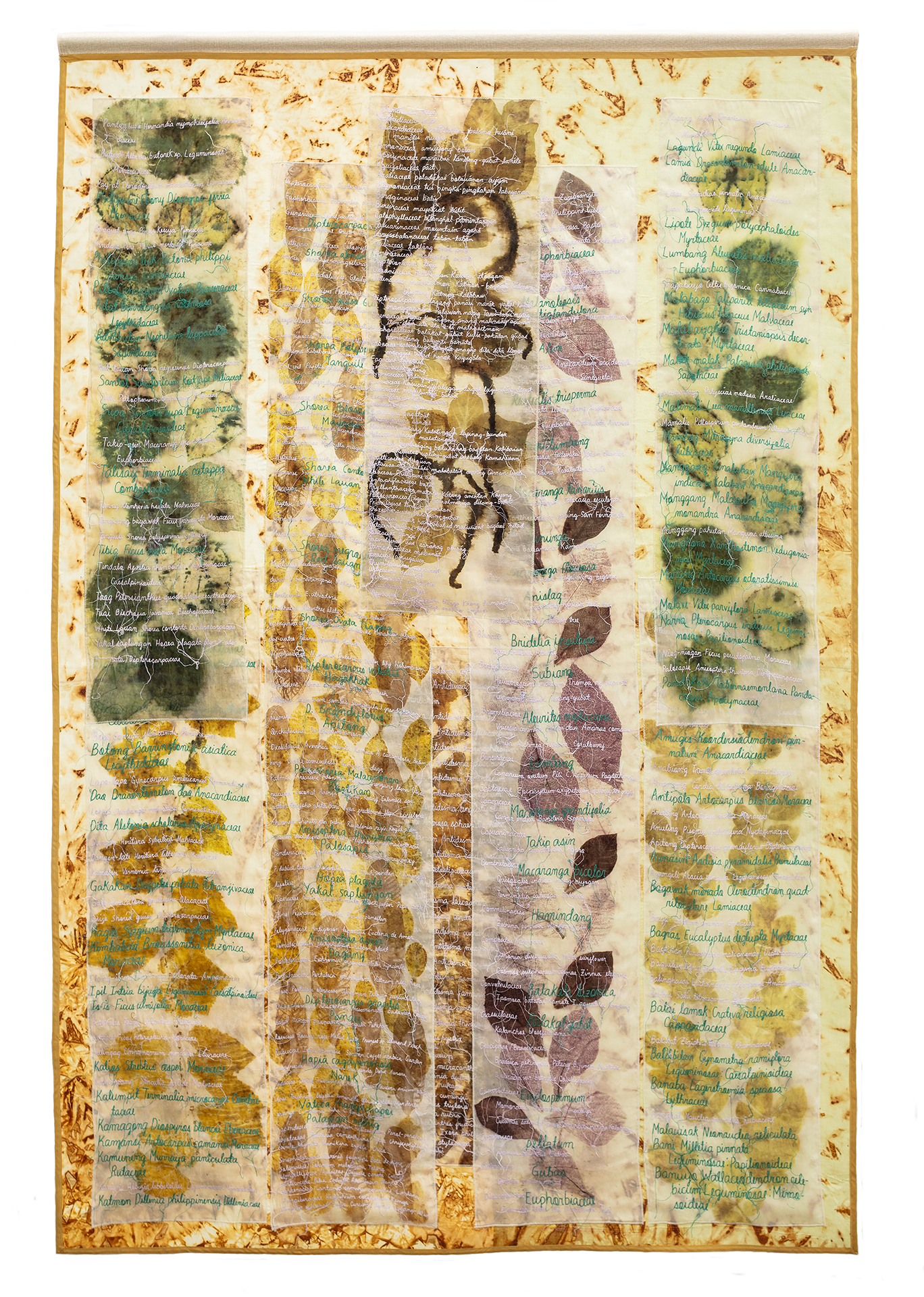
Life Cycle Series & Humans as Predators
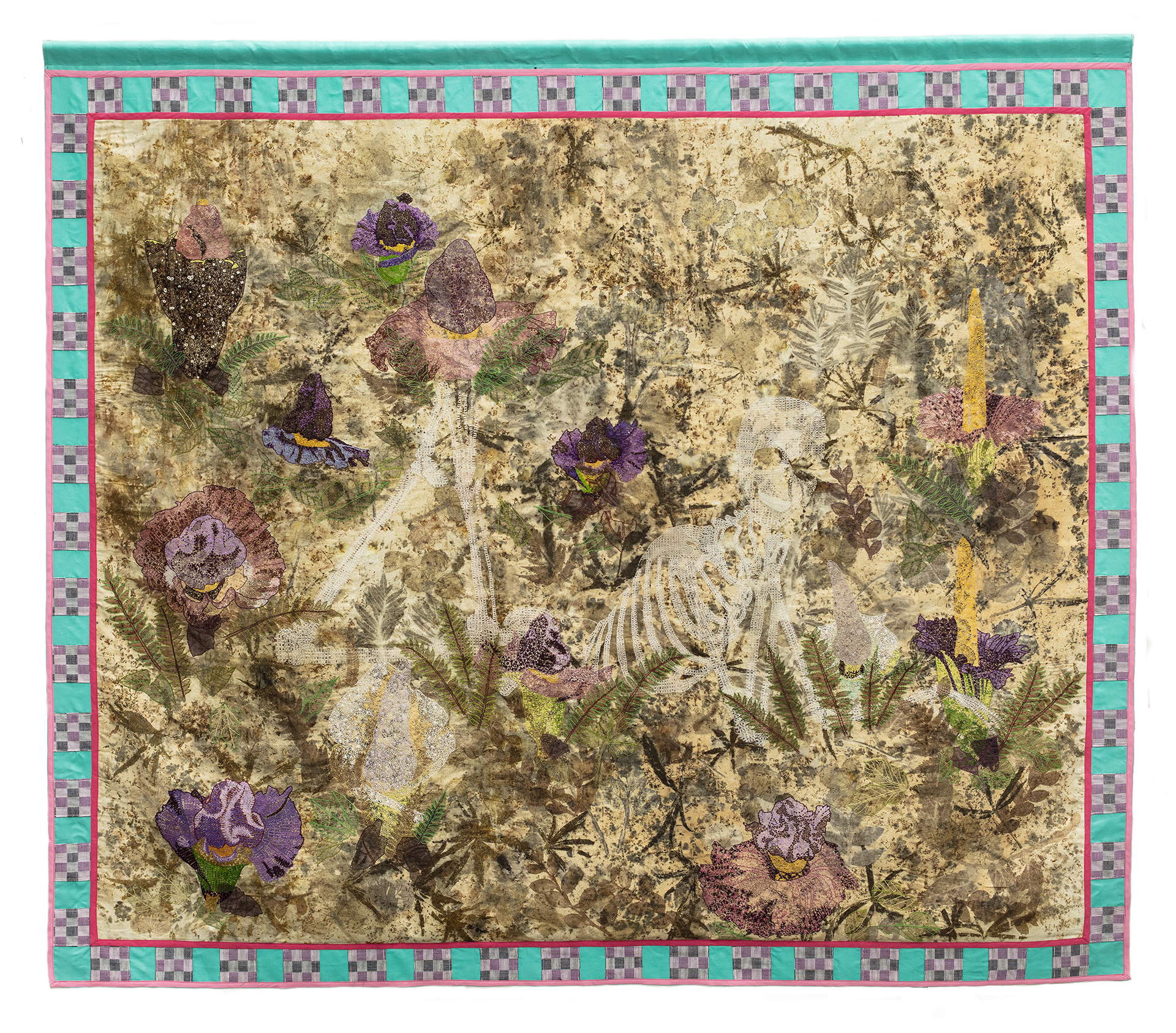
Untitled: 111.42h x 91.34w in • 283h x 232w cm
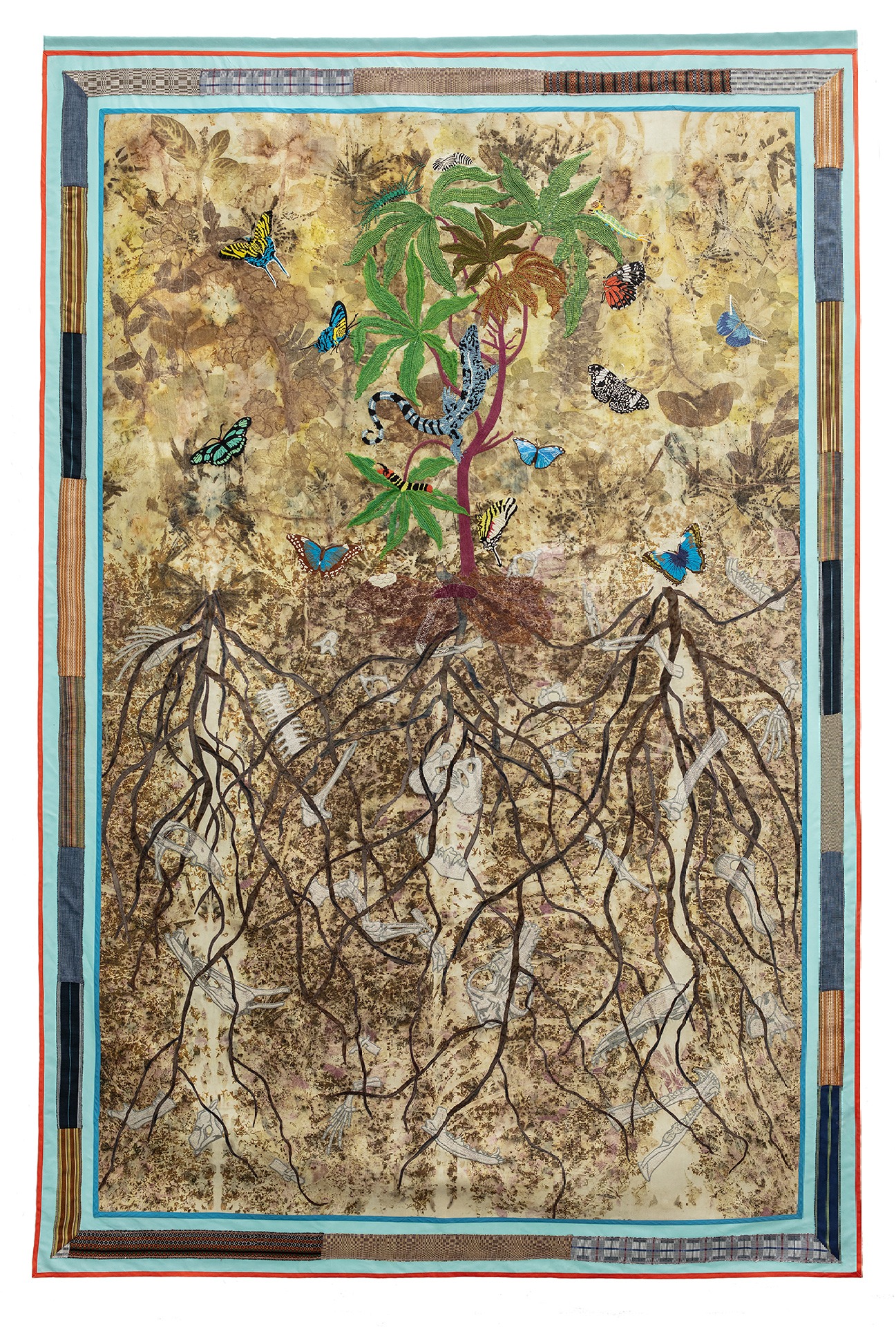
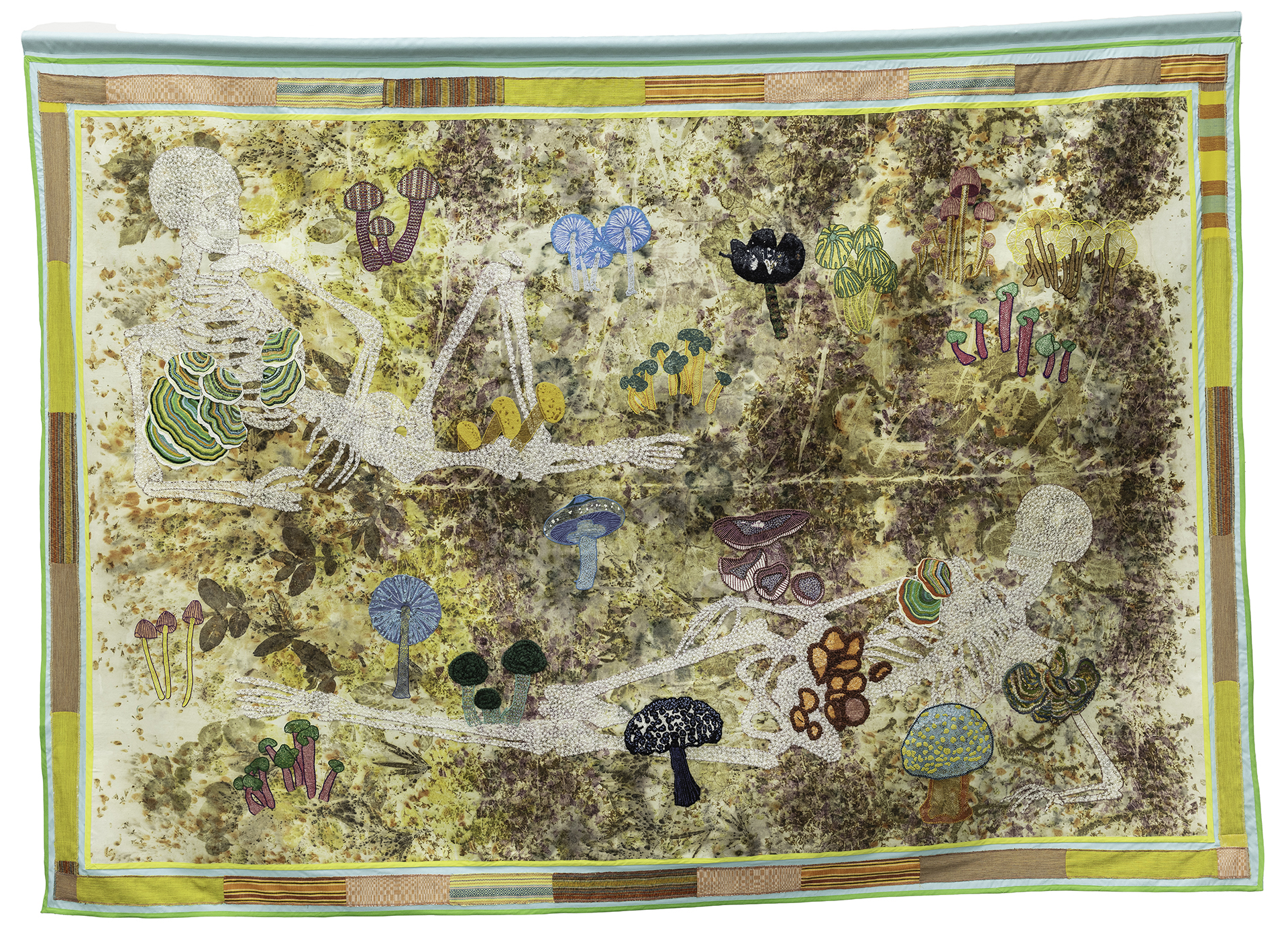
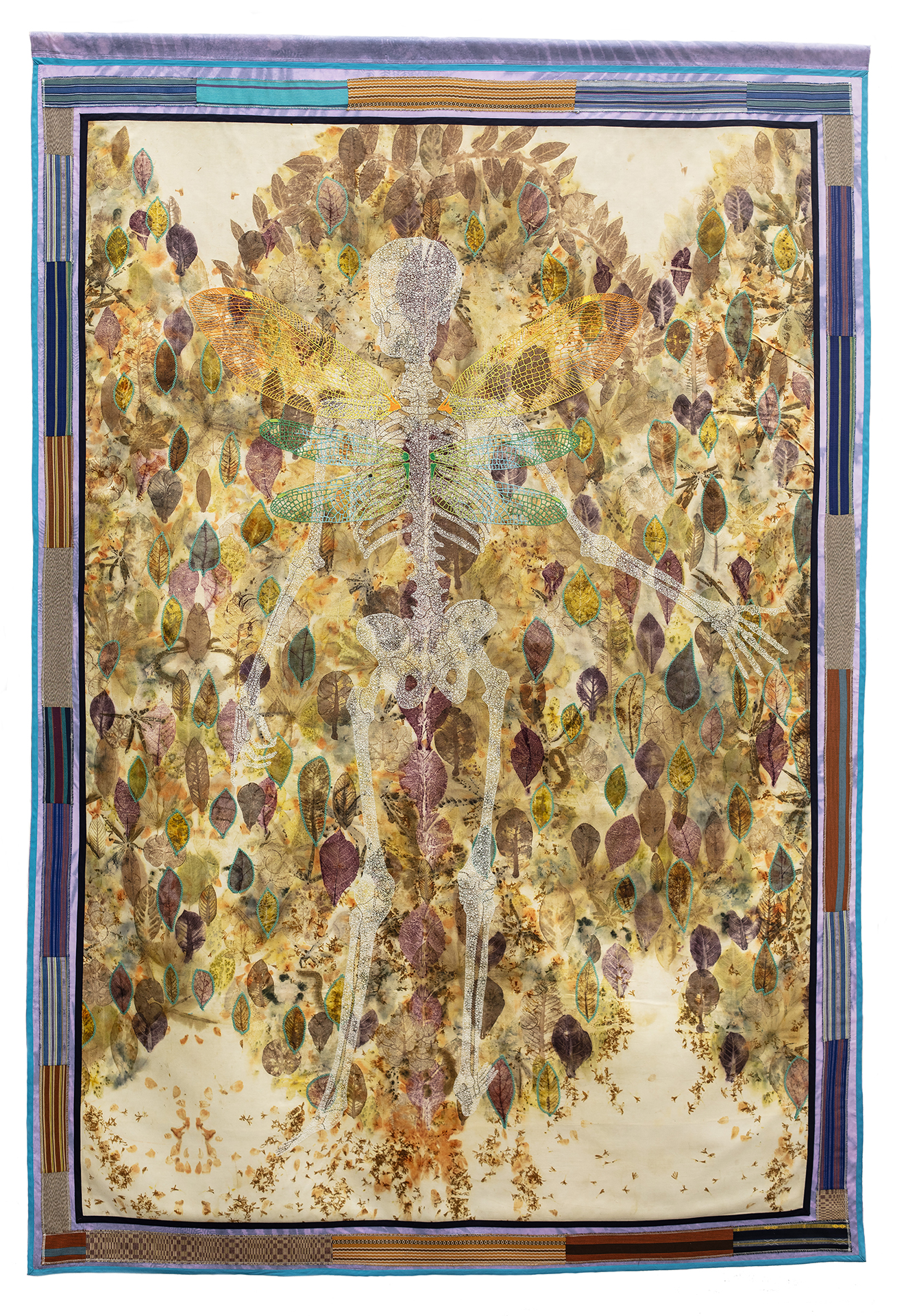
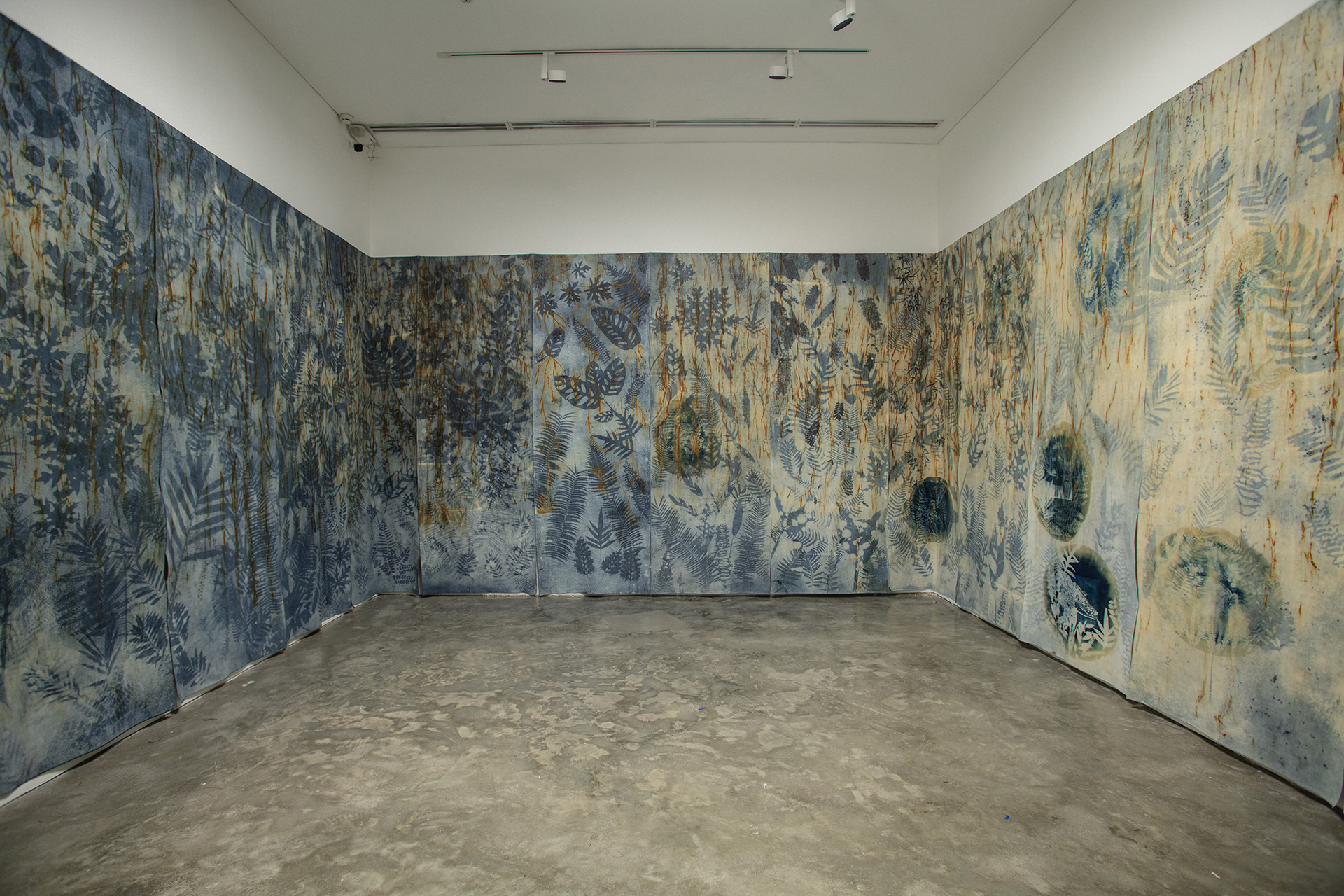
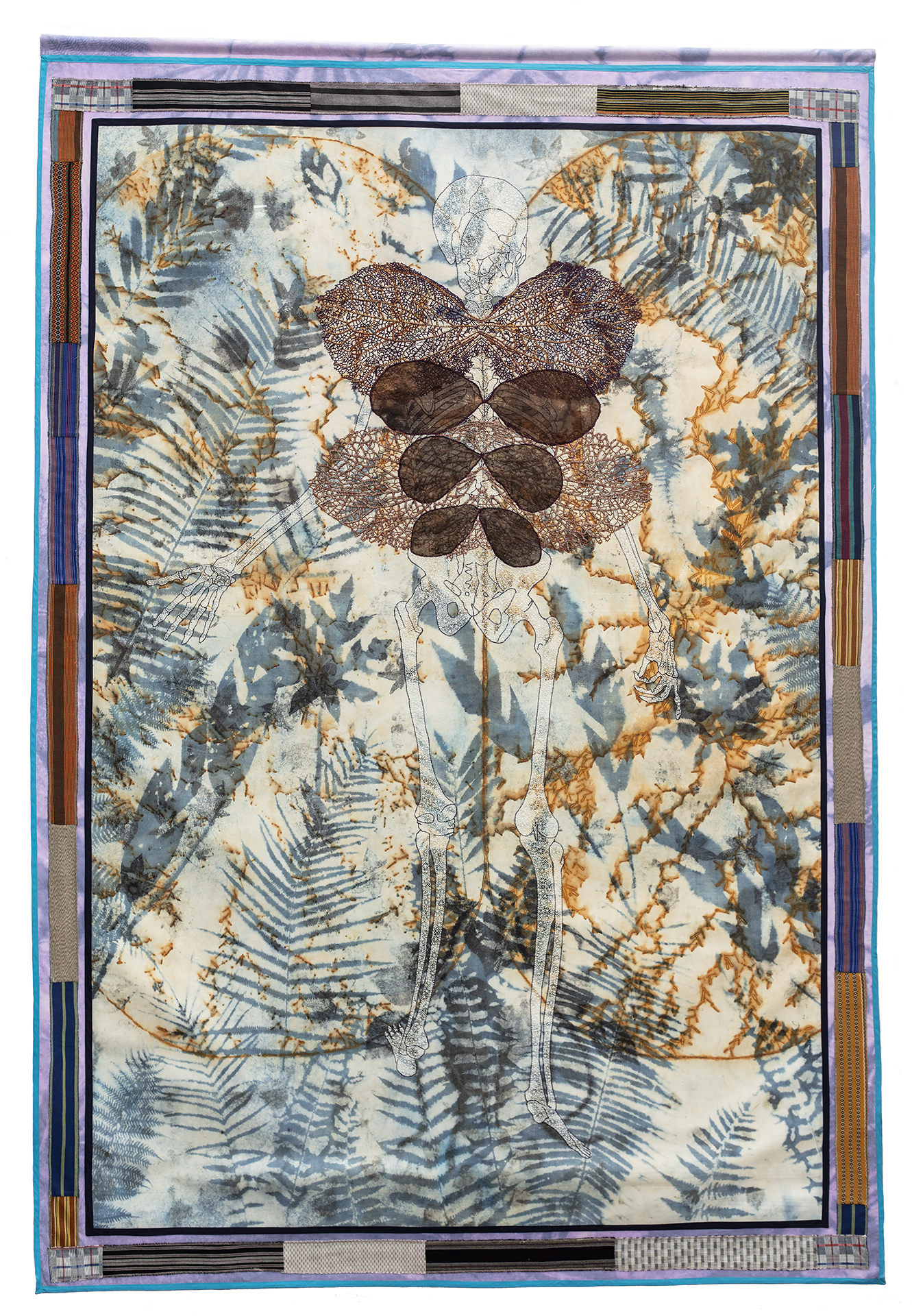
New Species in an Anthropocene Era
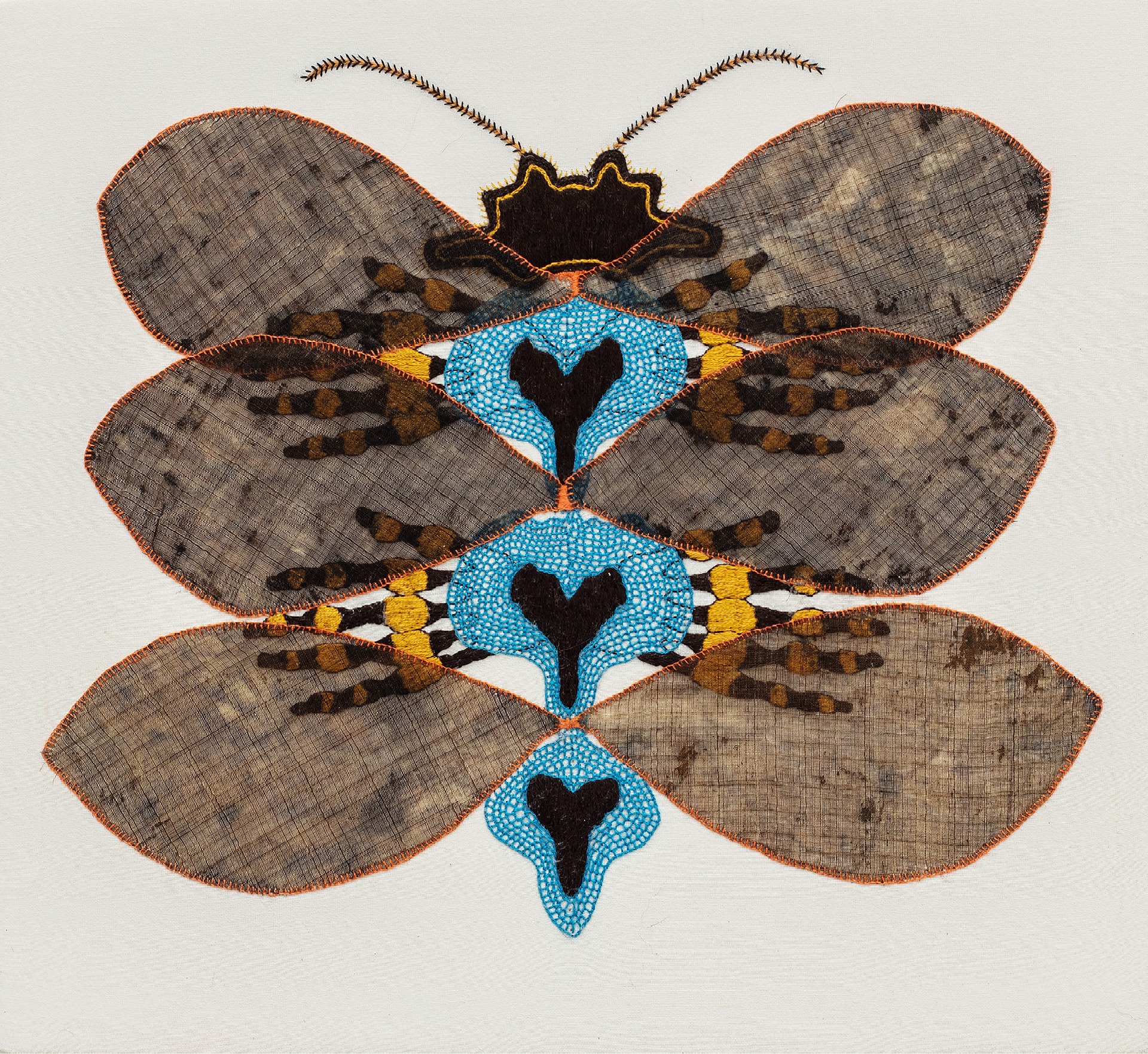
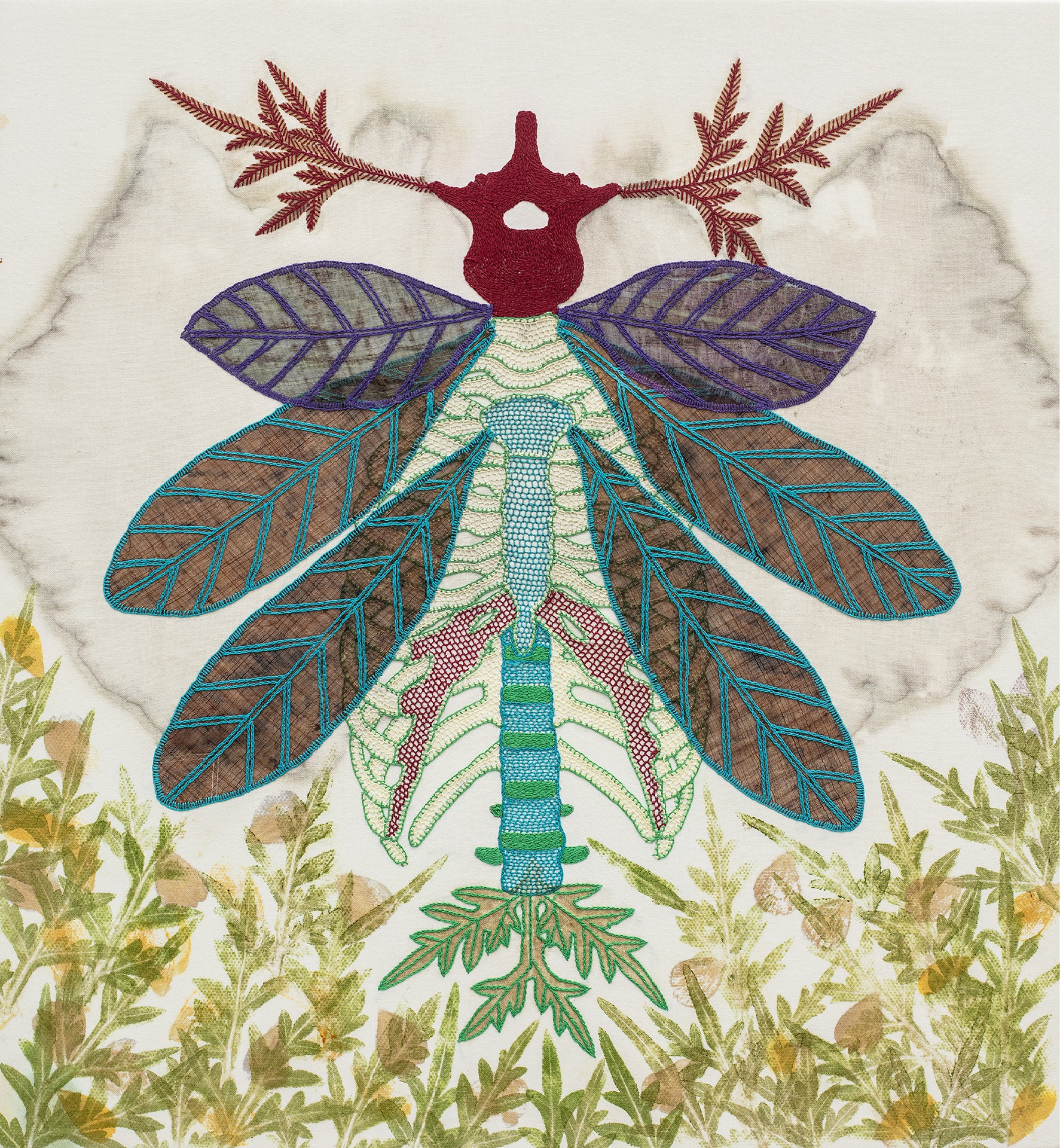
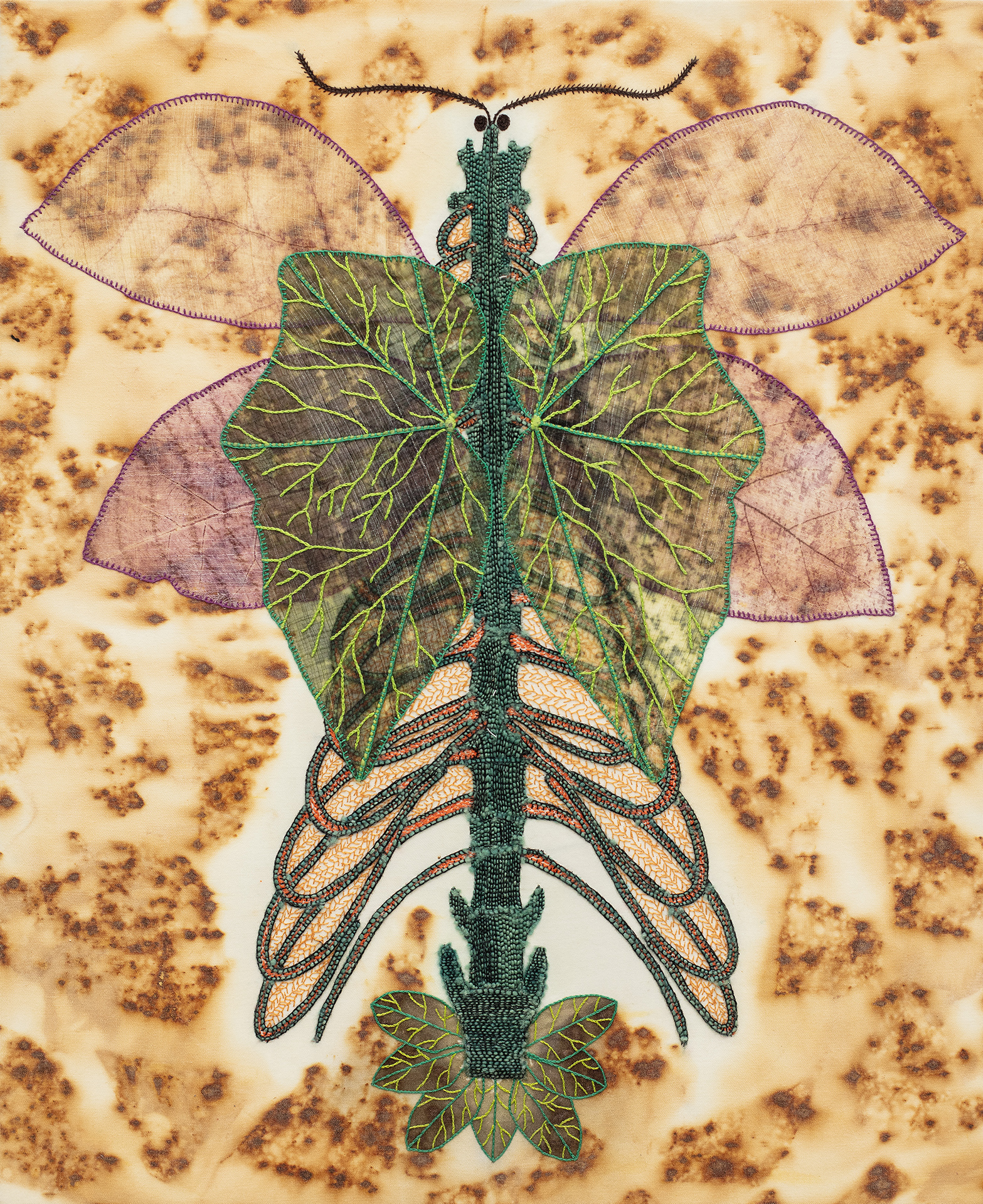
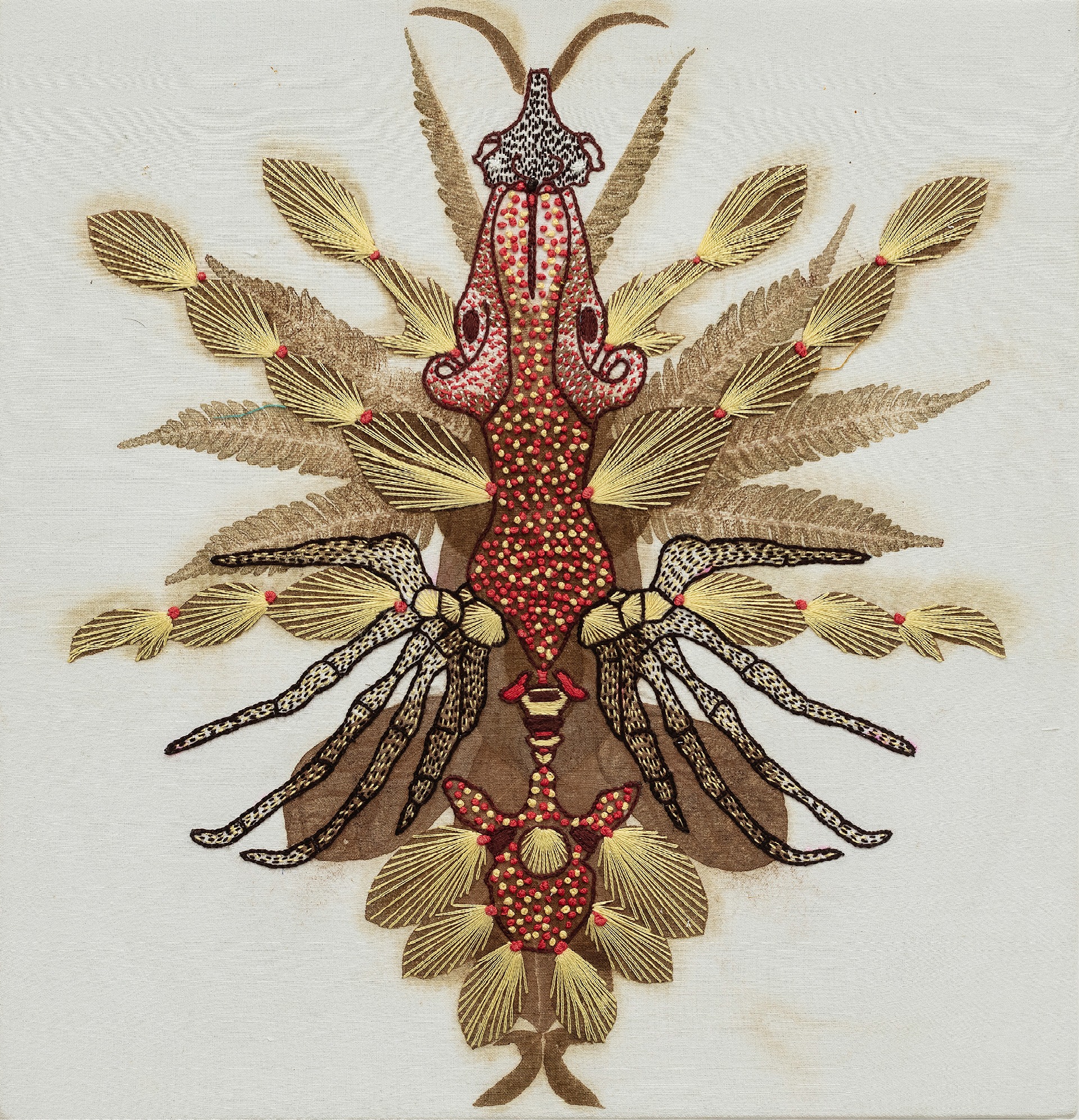
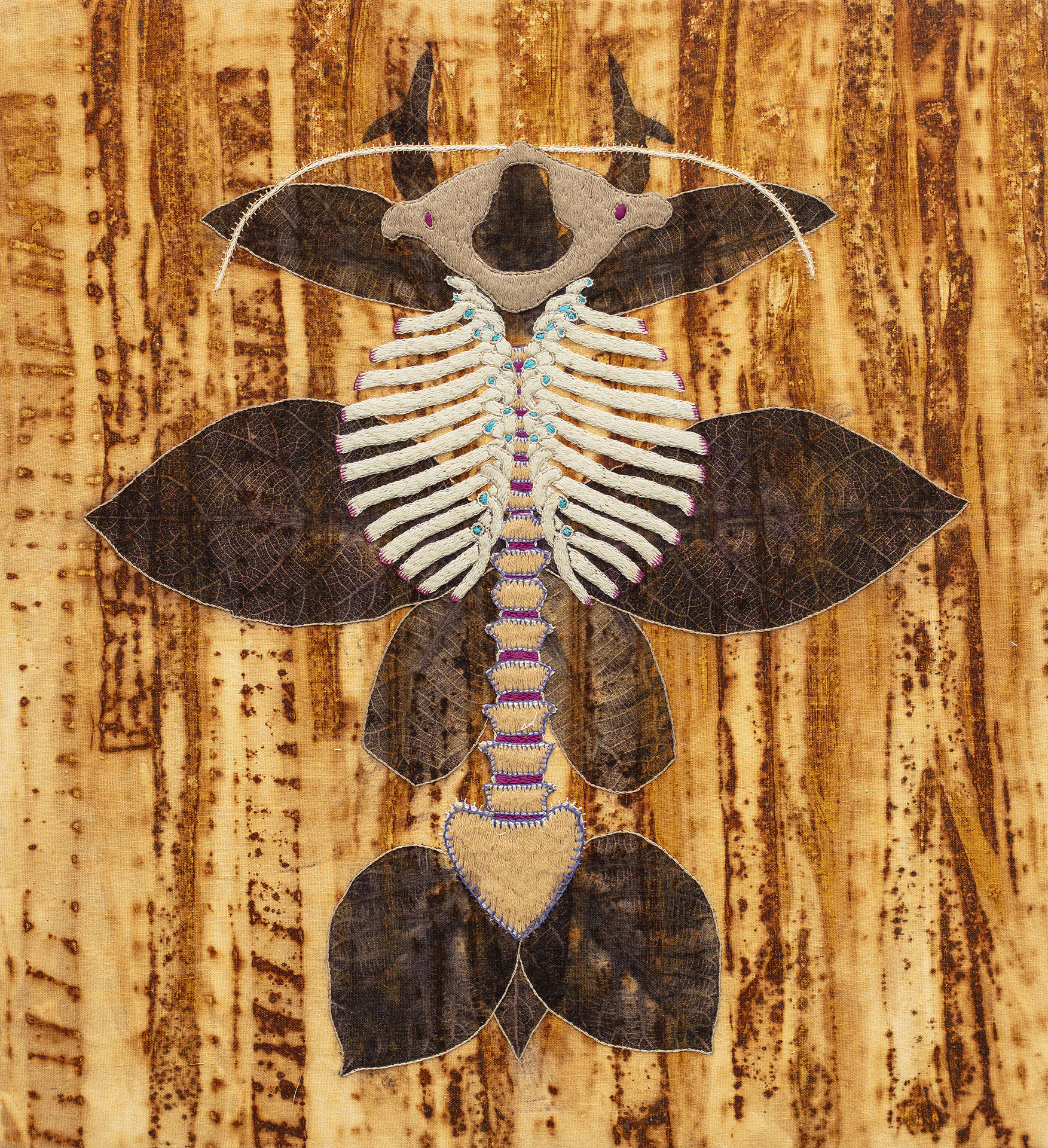
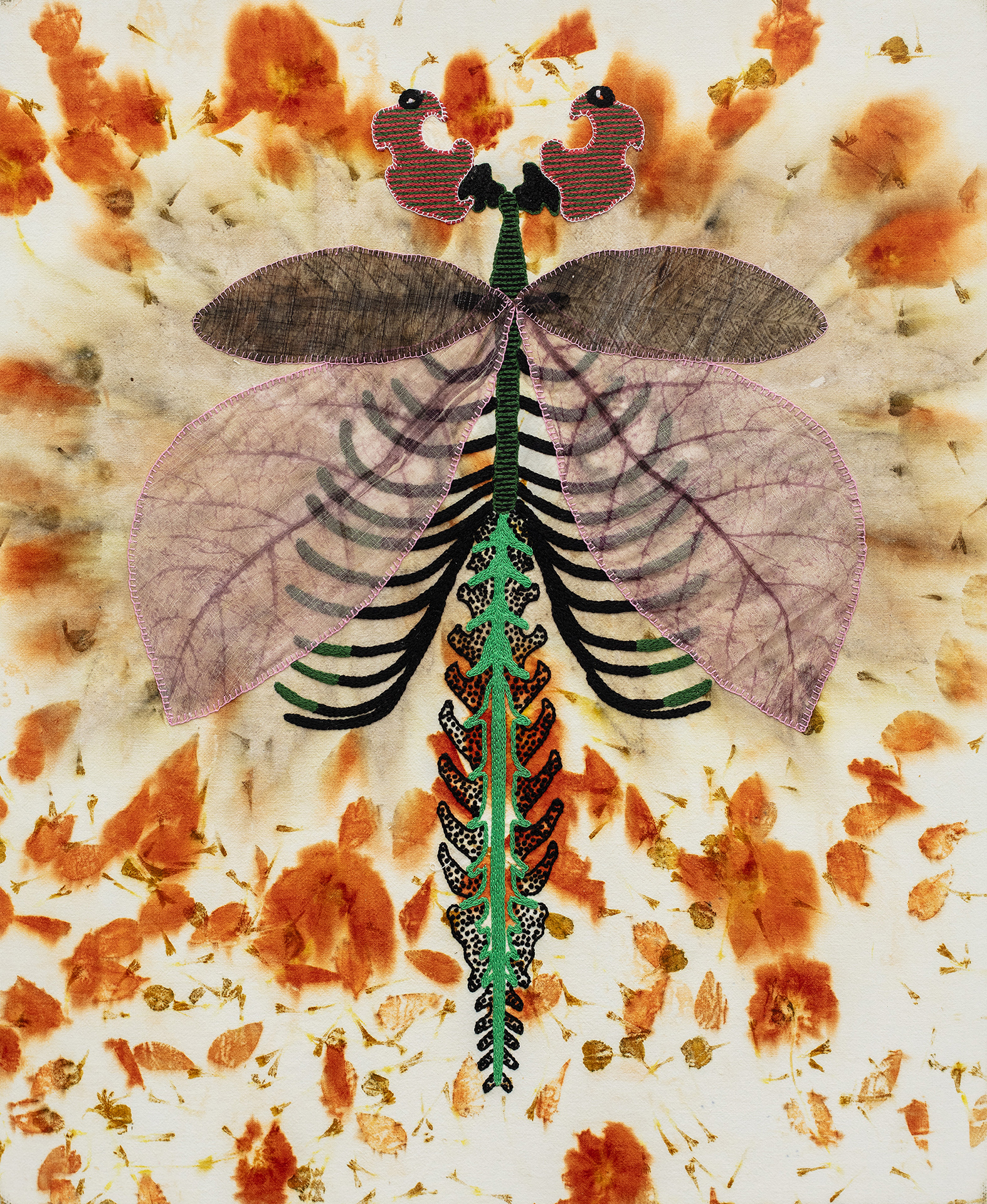
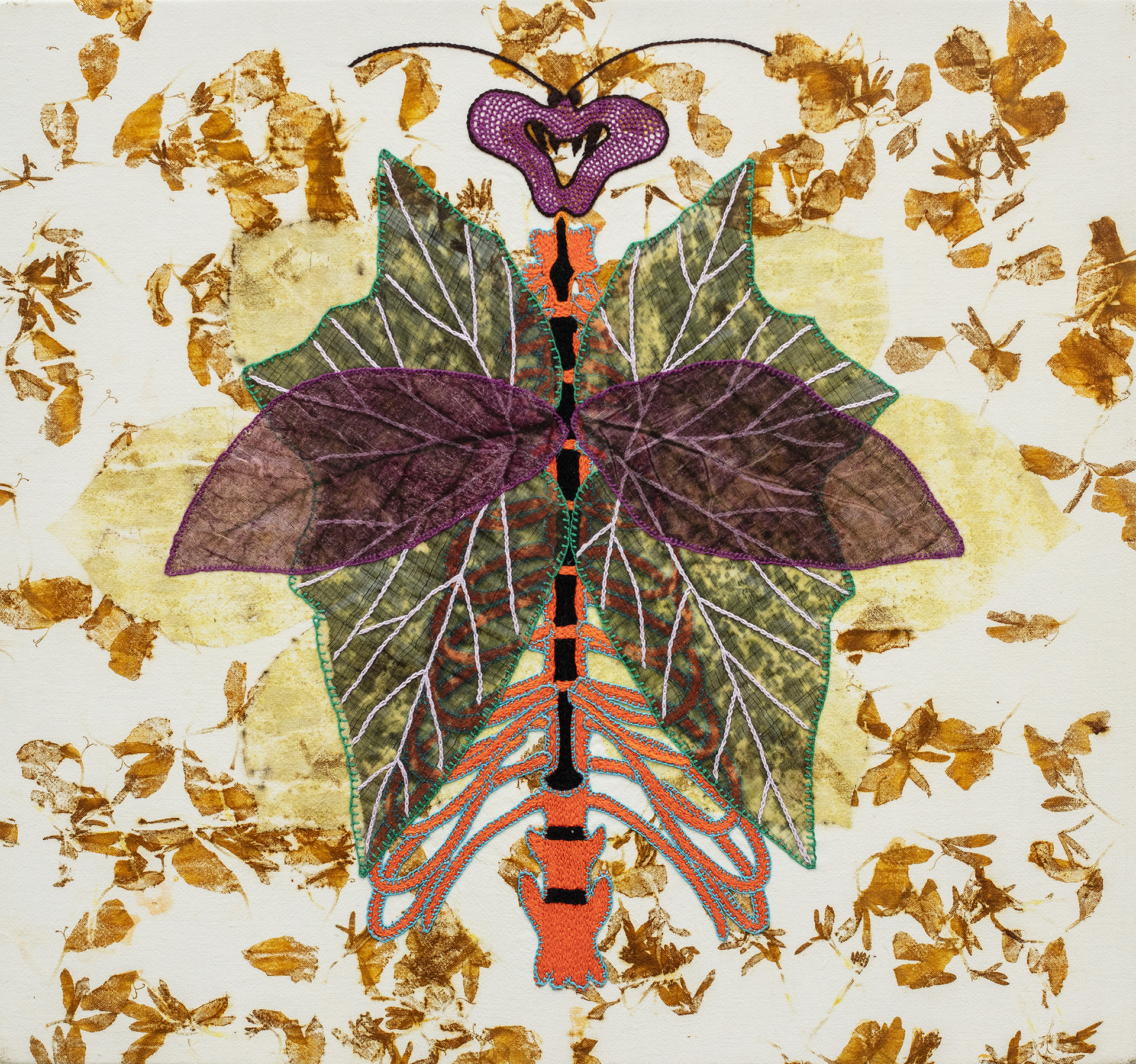
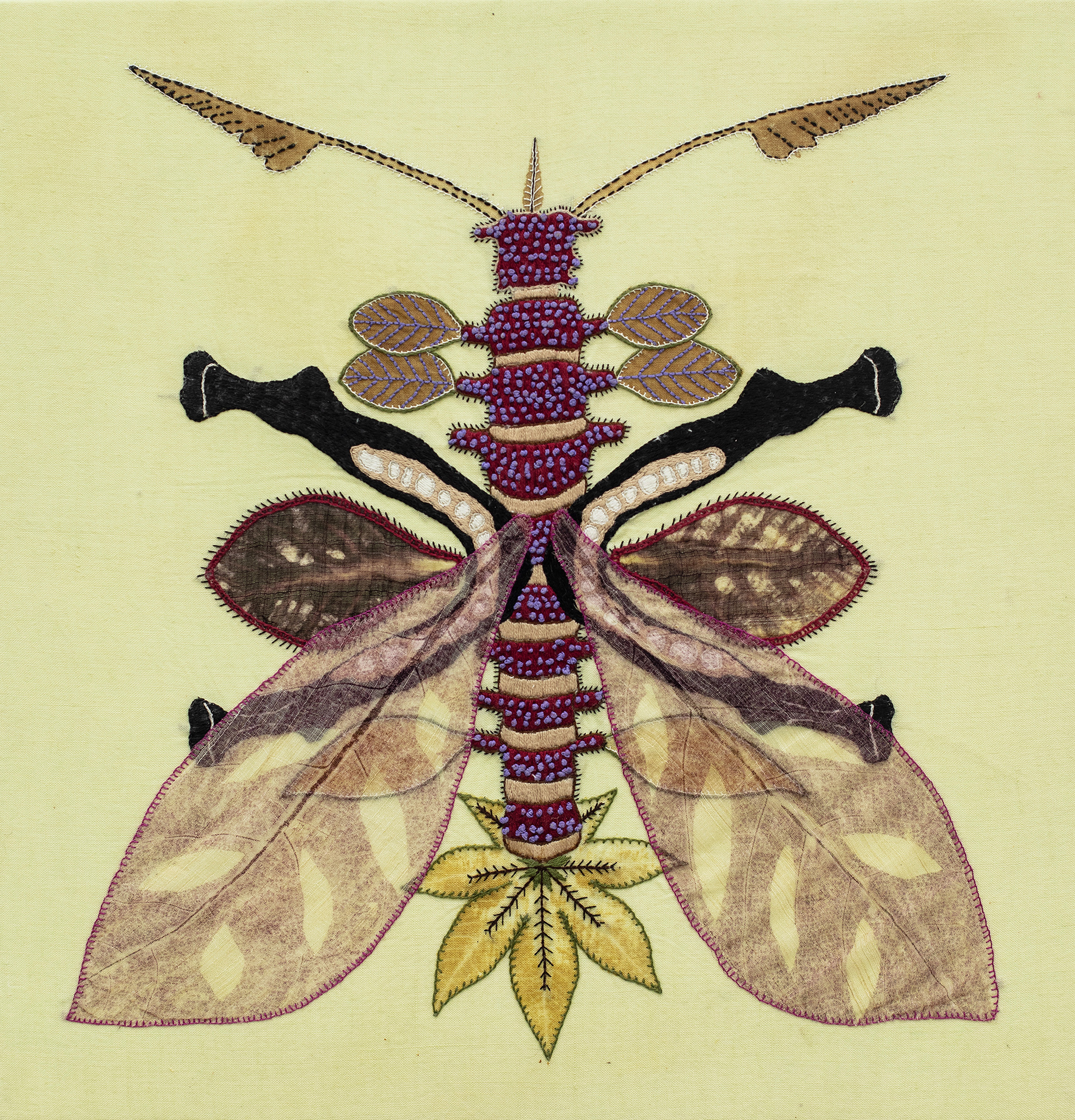
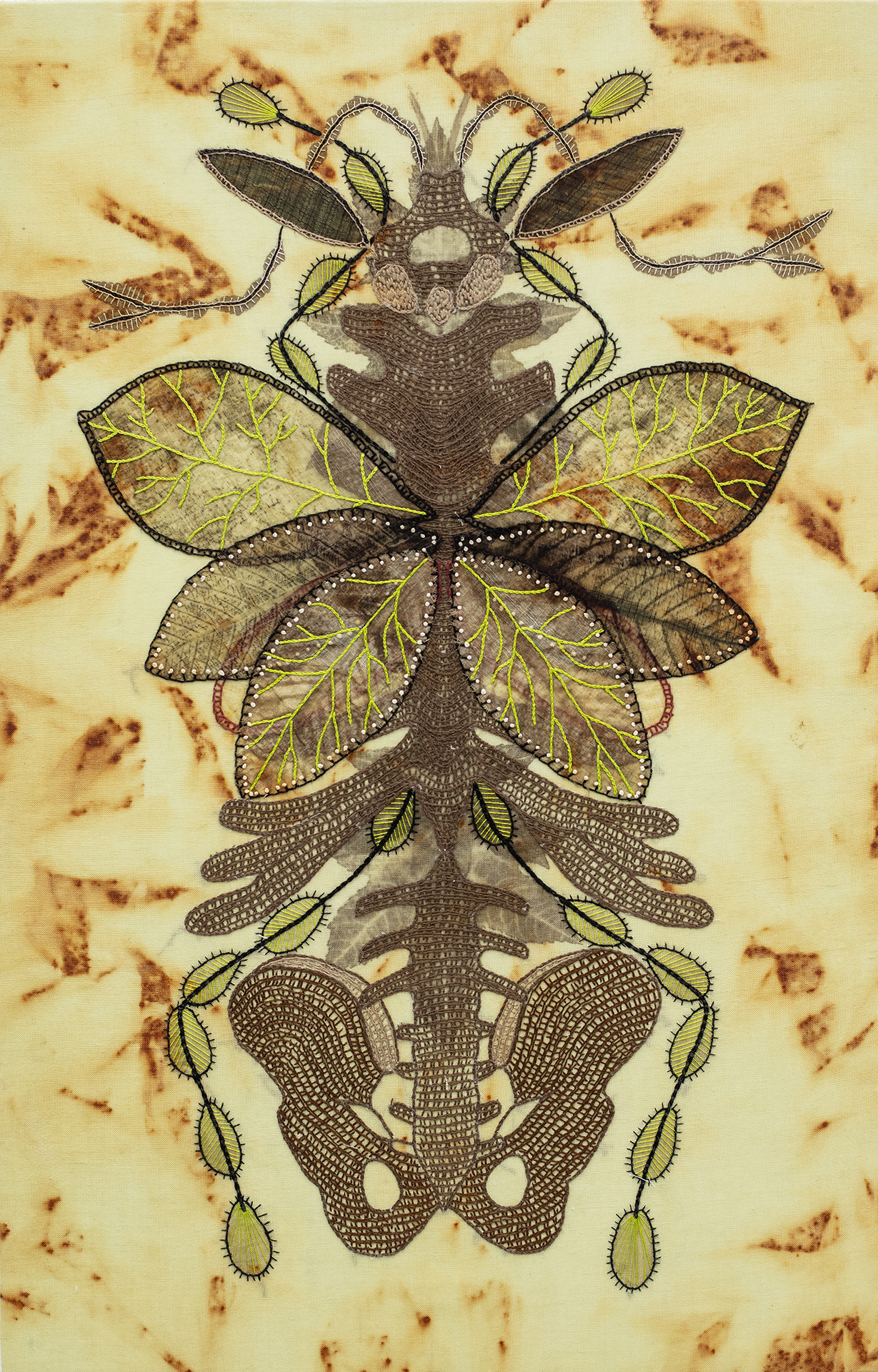
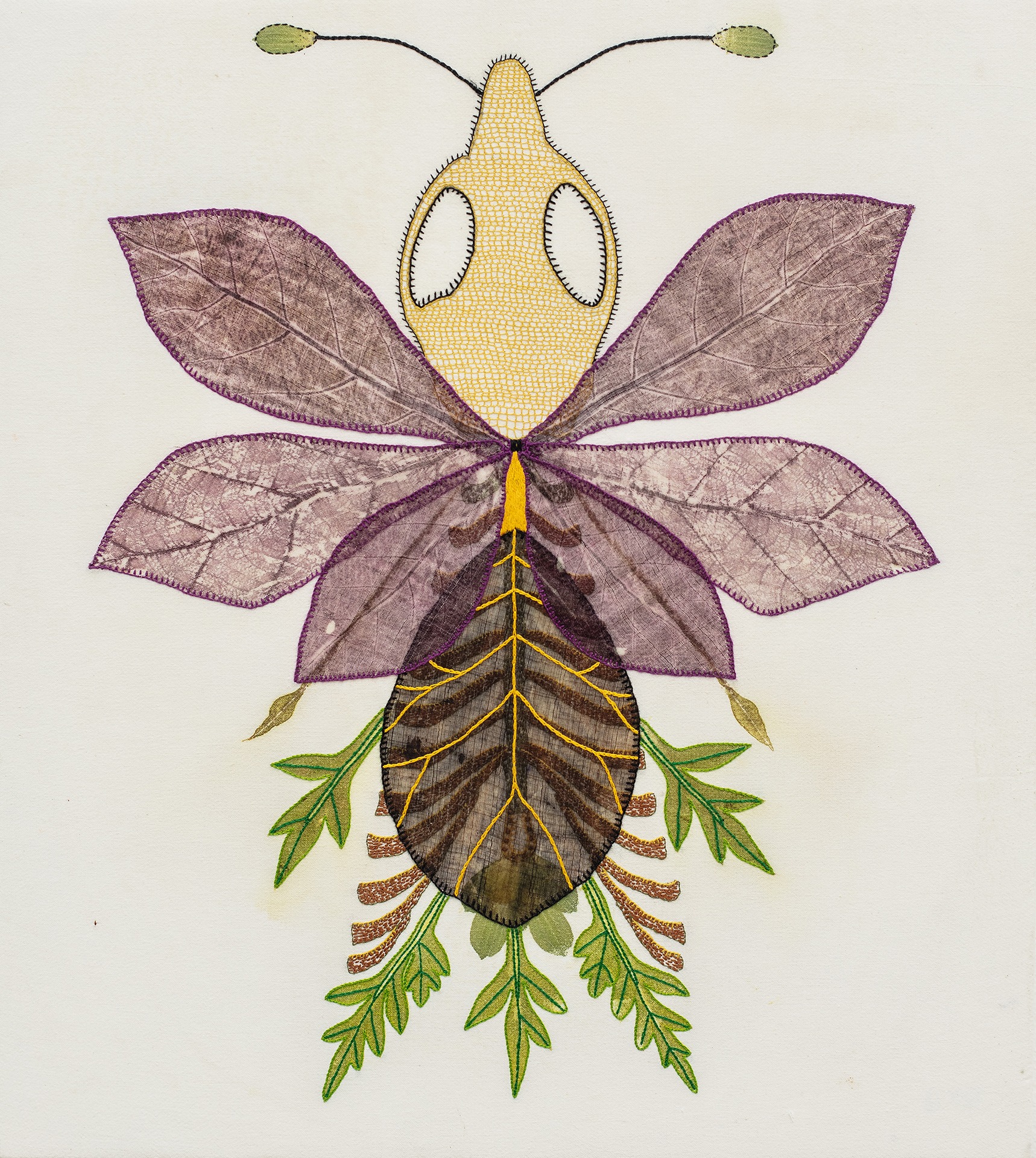
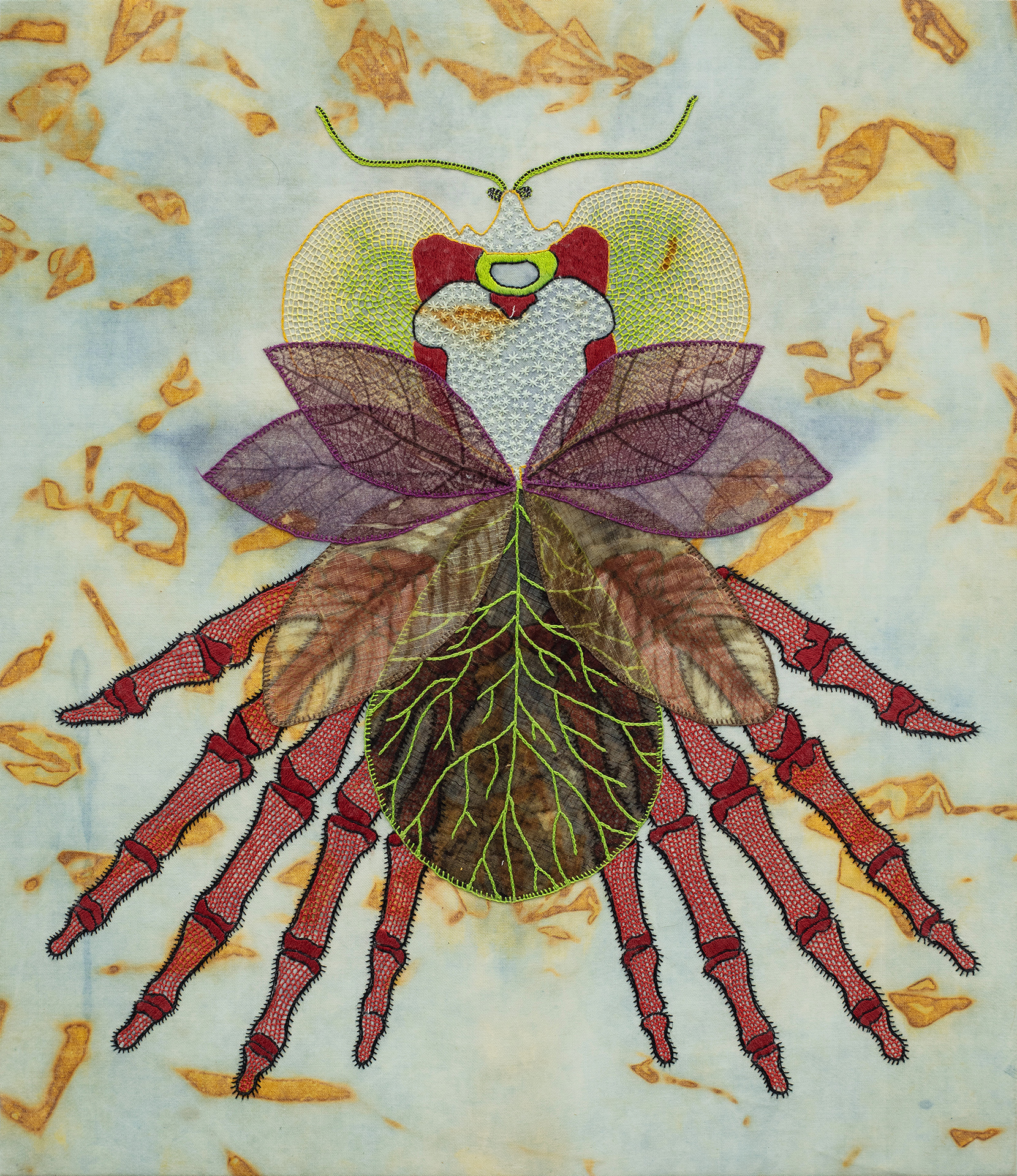
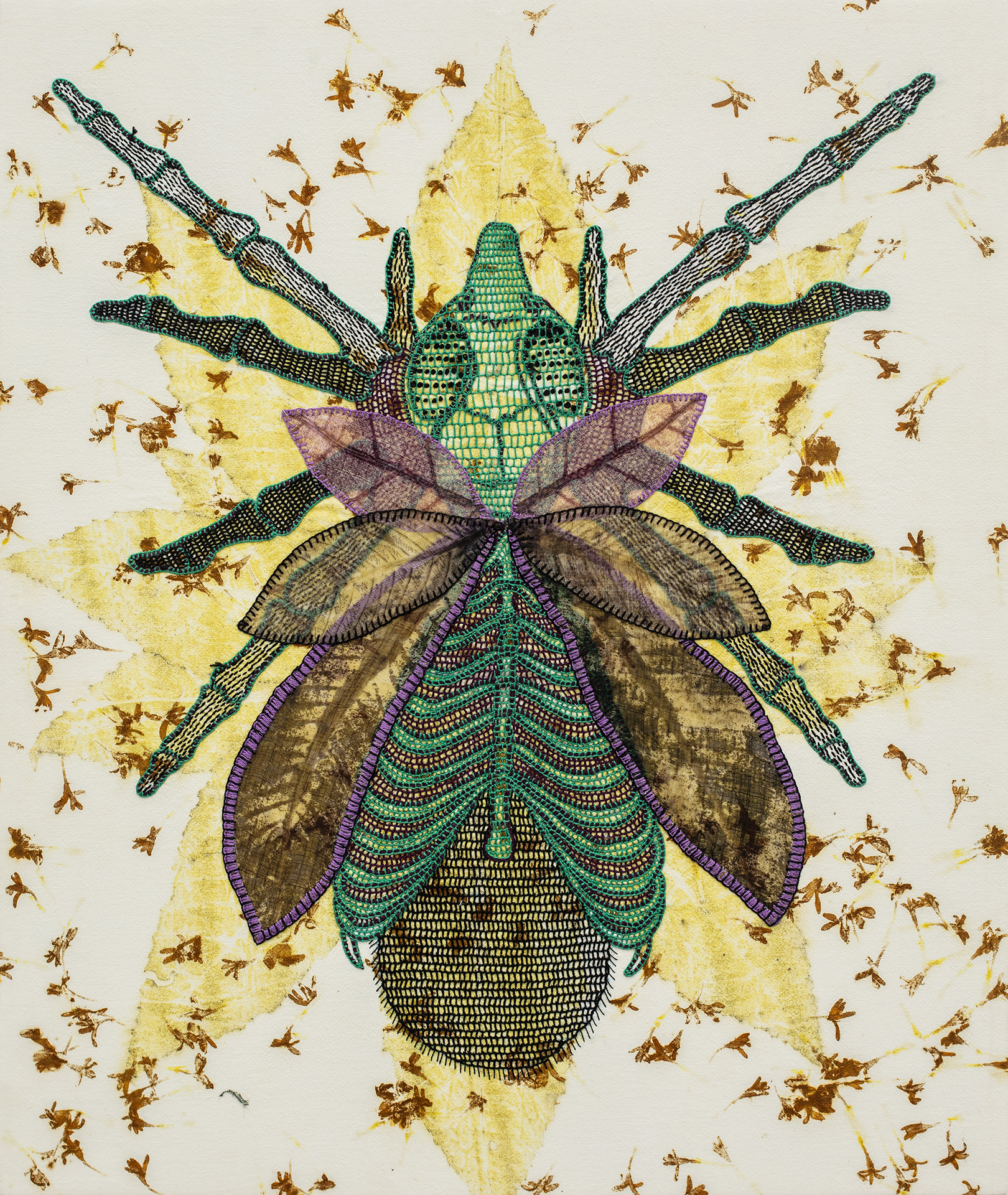
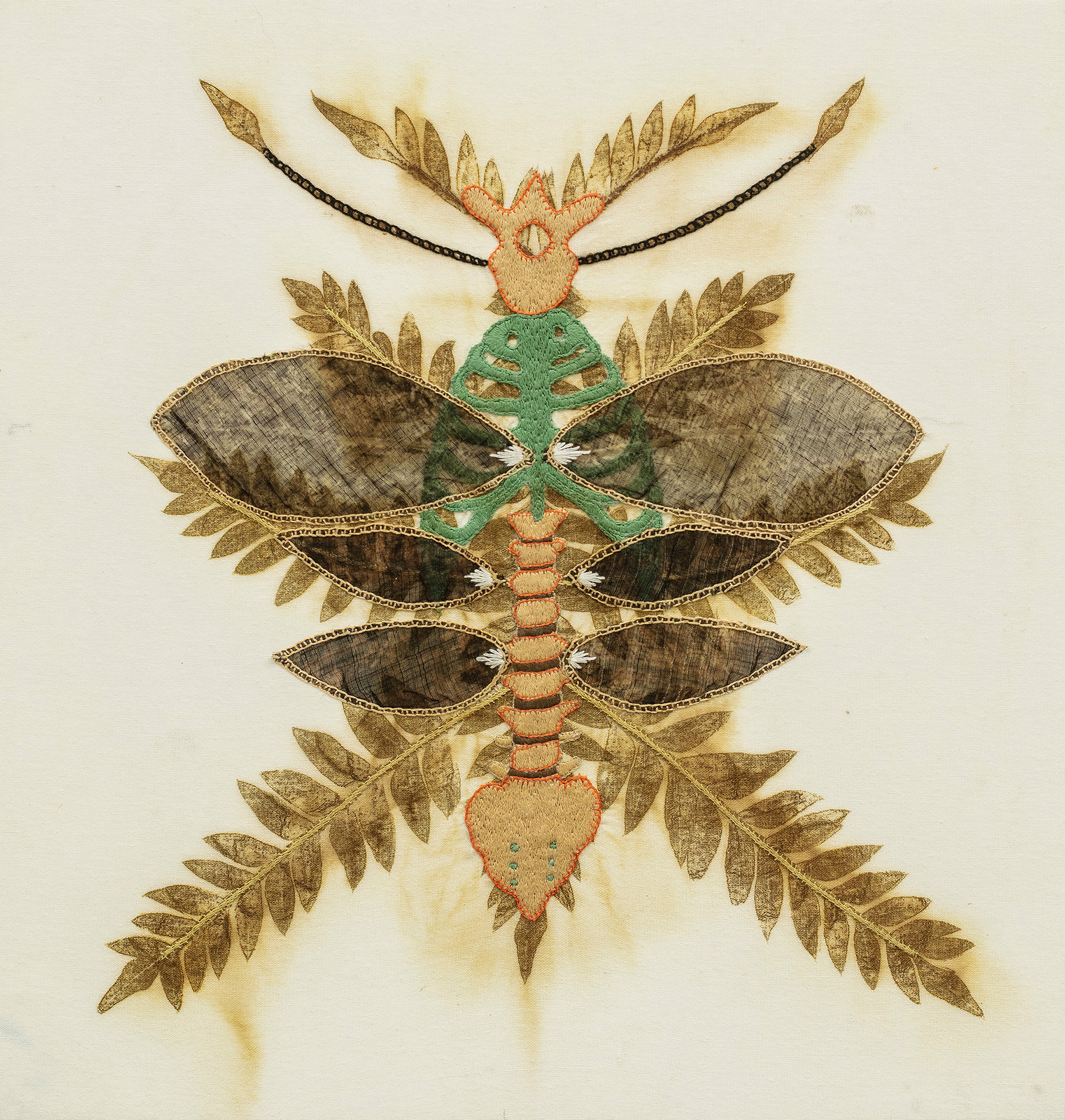
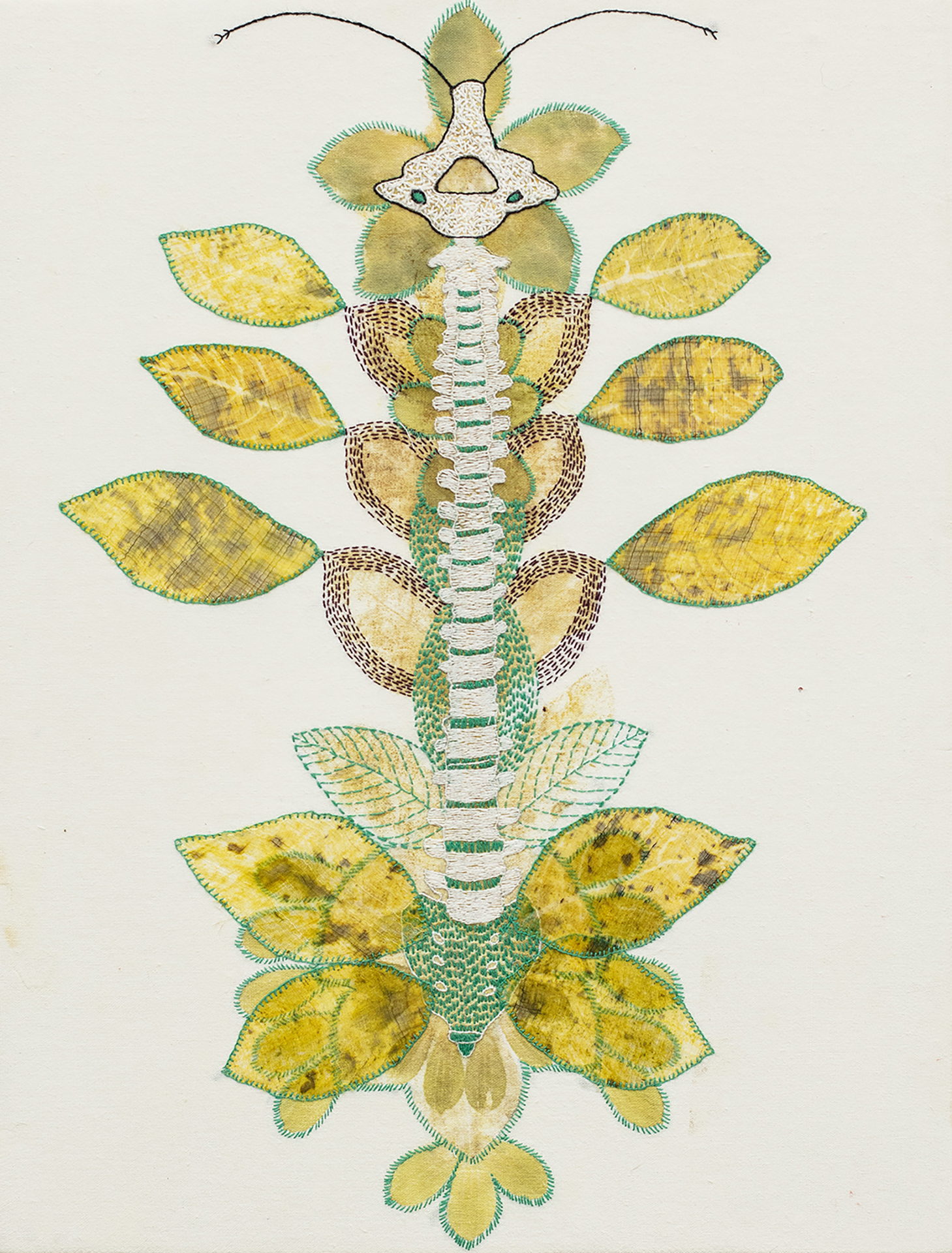
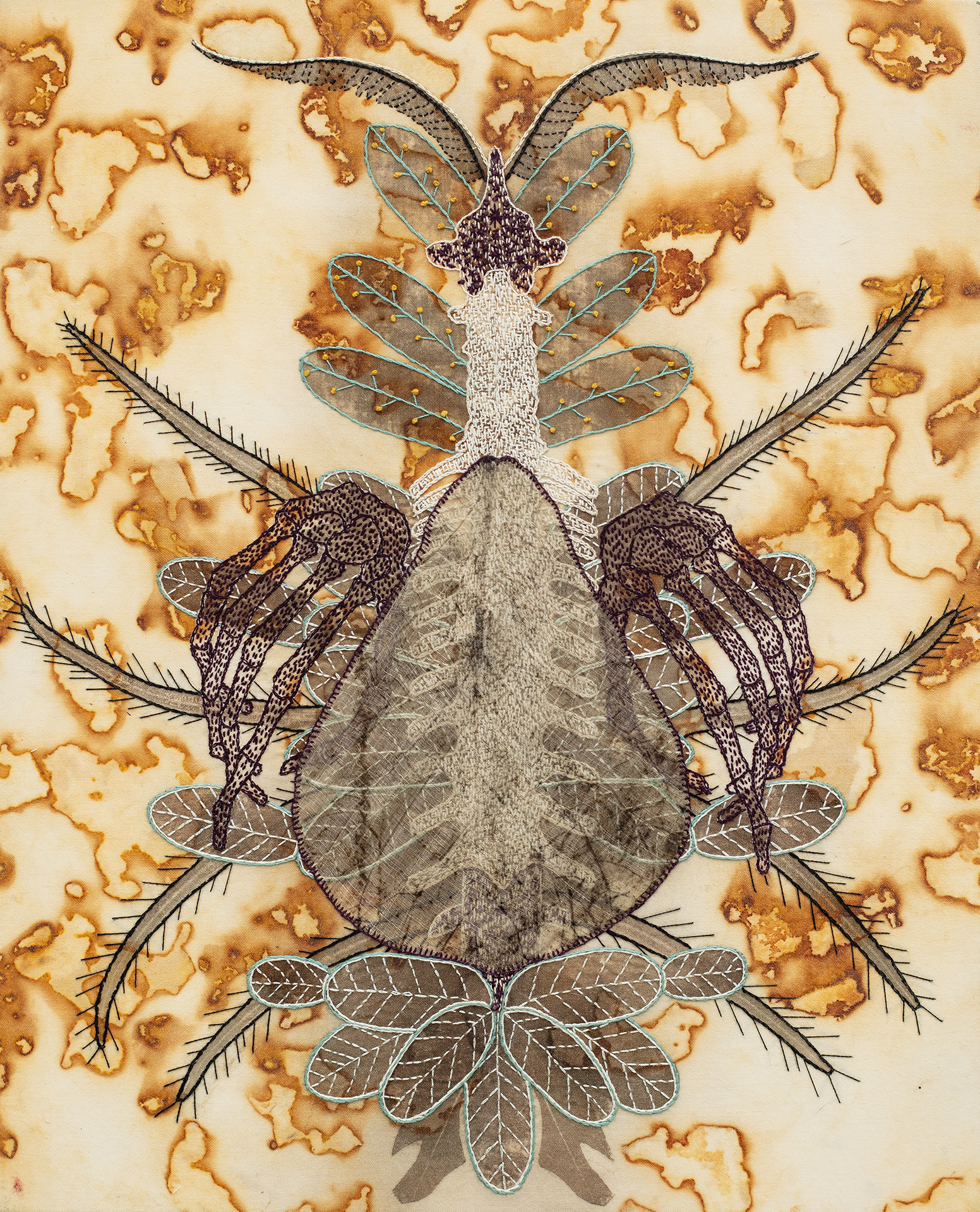
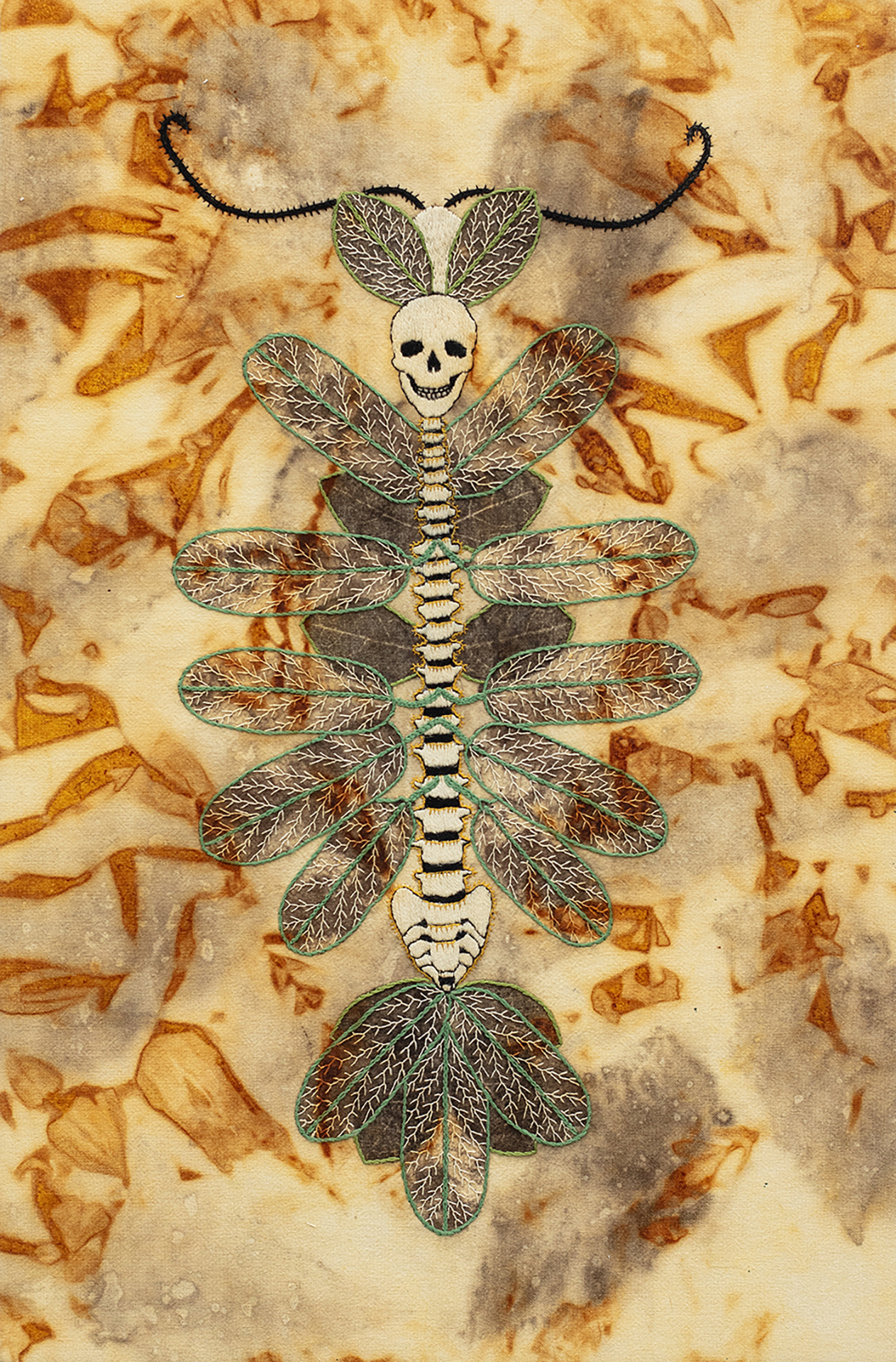
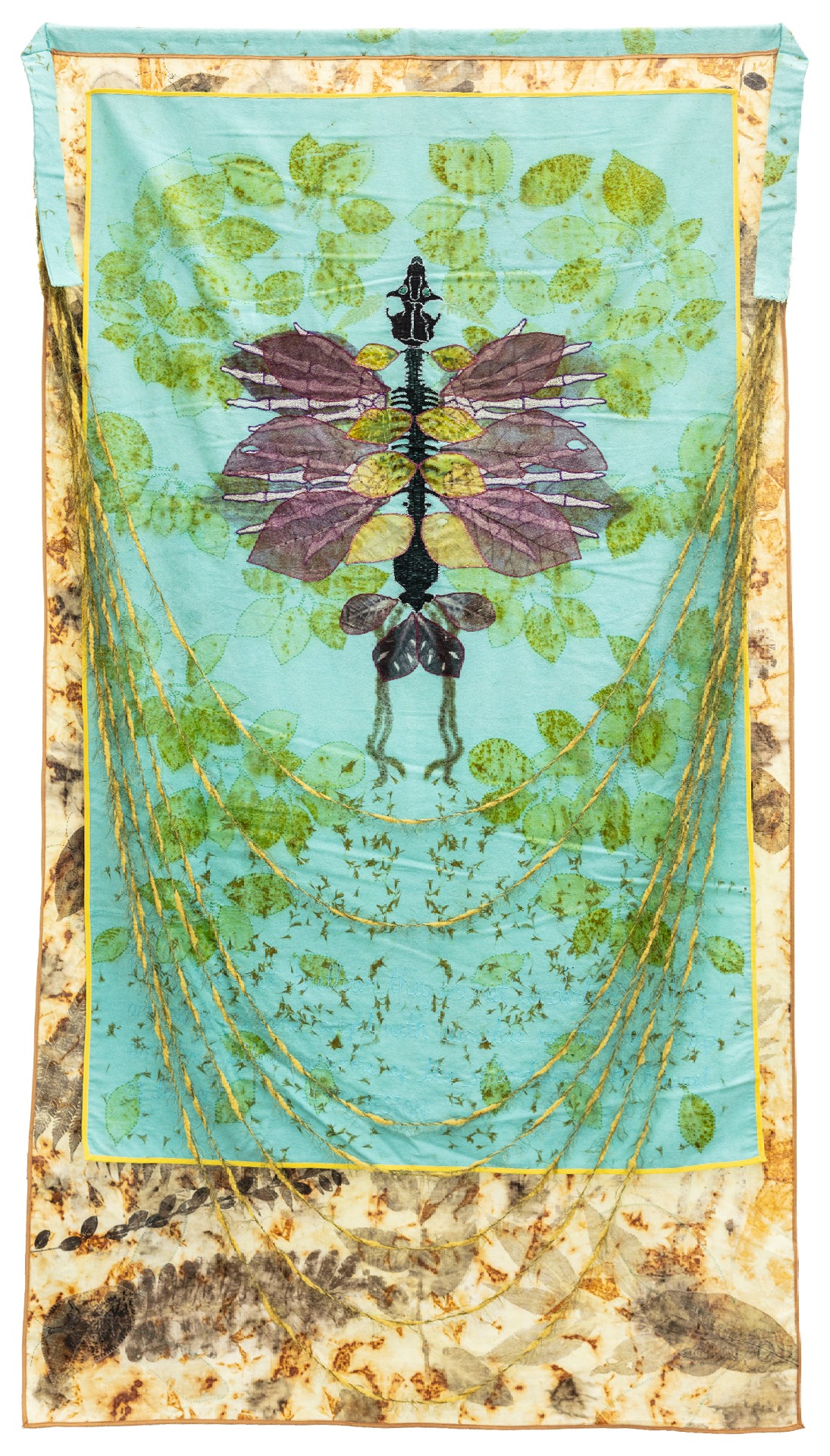
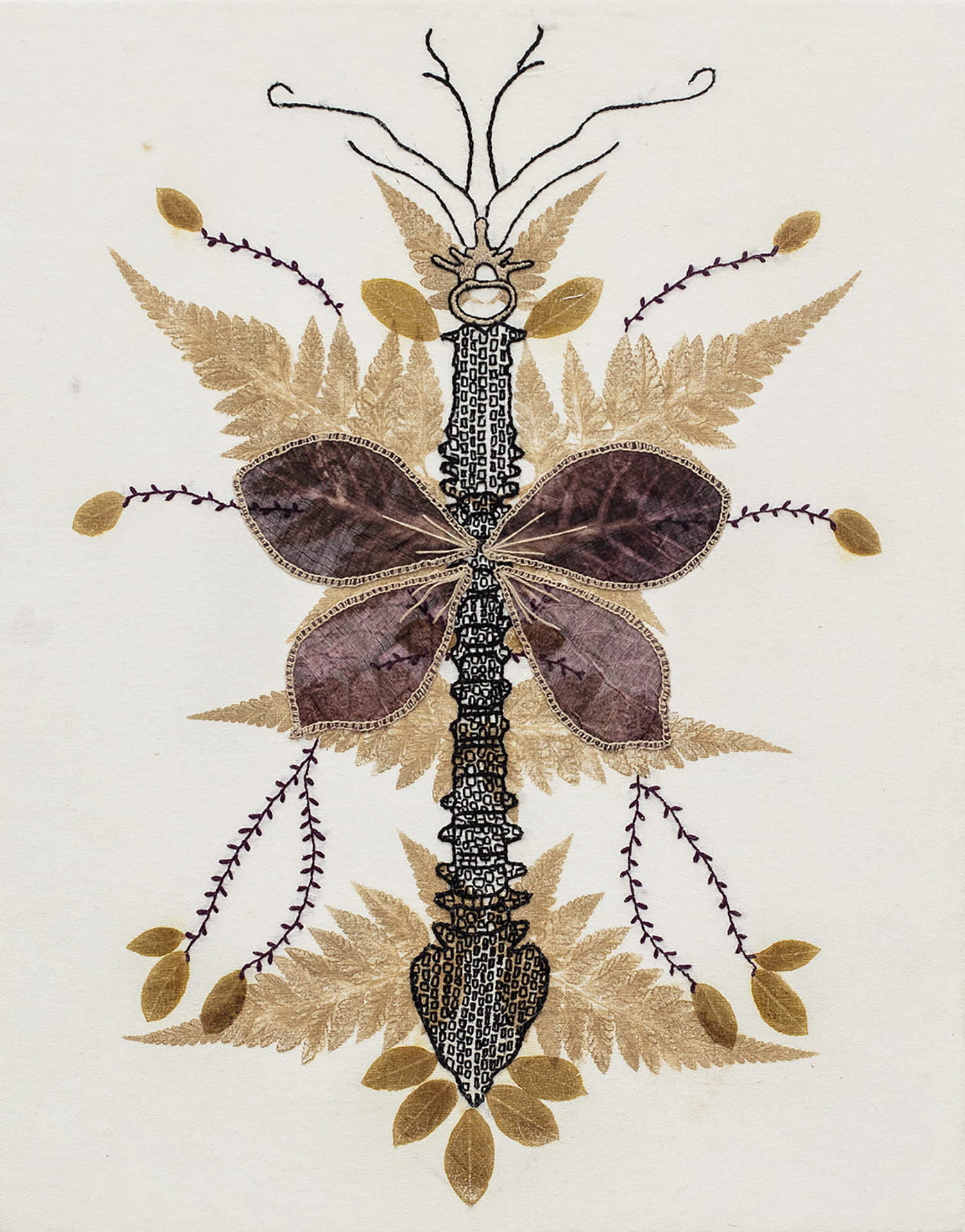
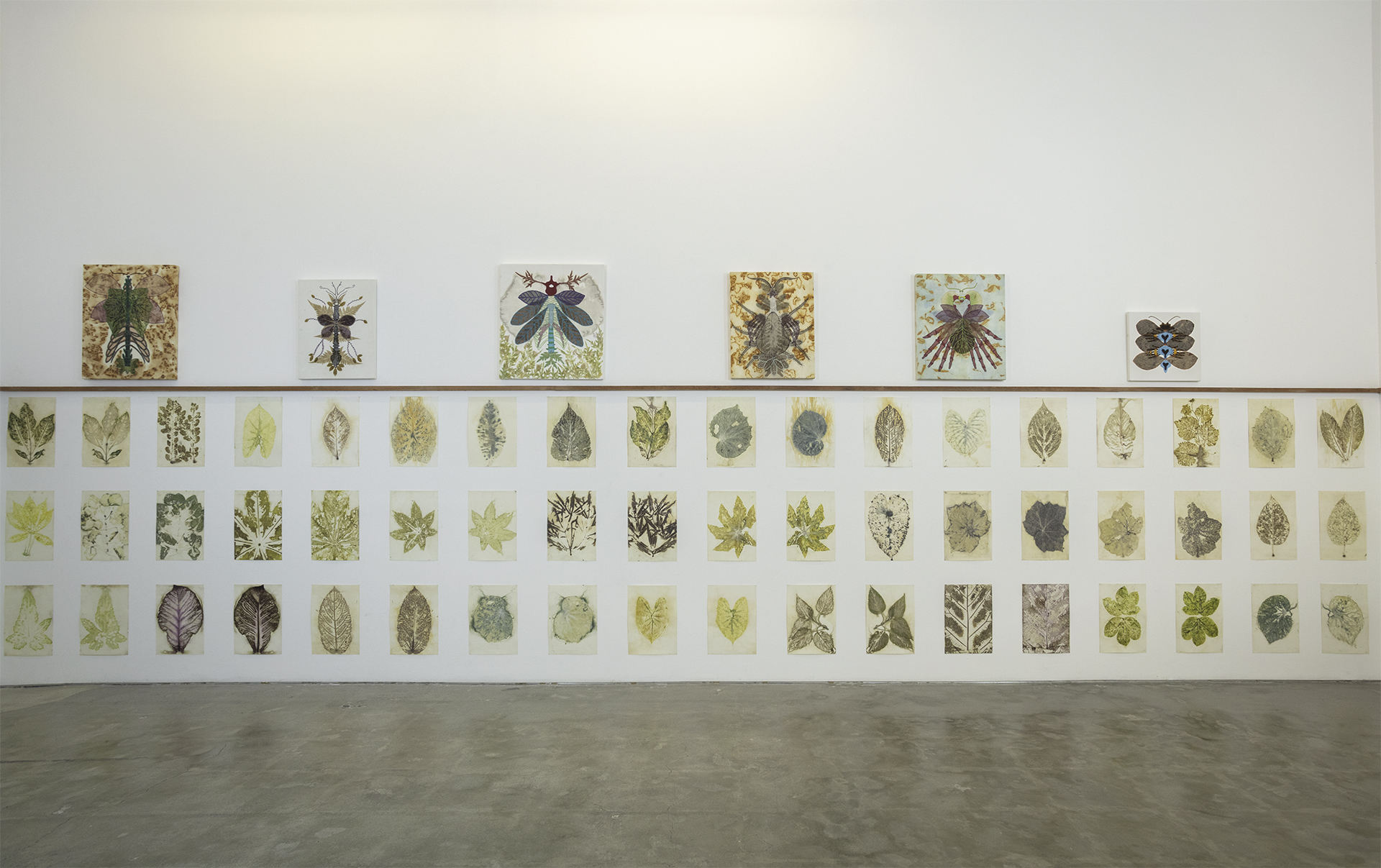
SPI_GJ032
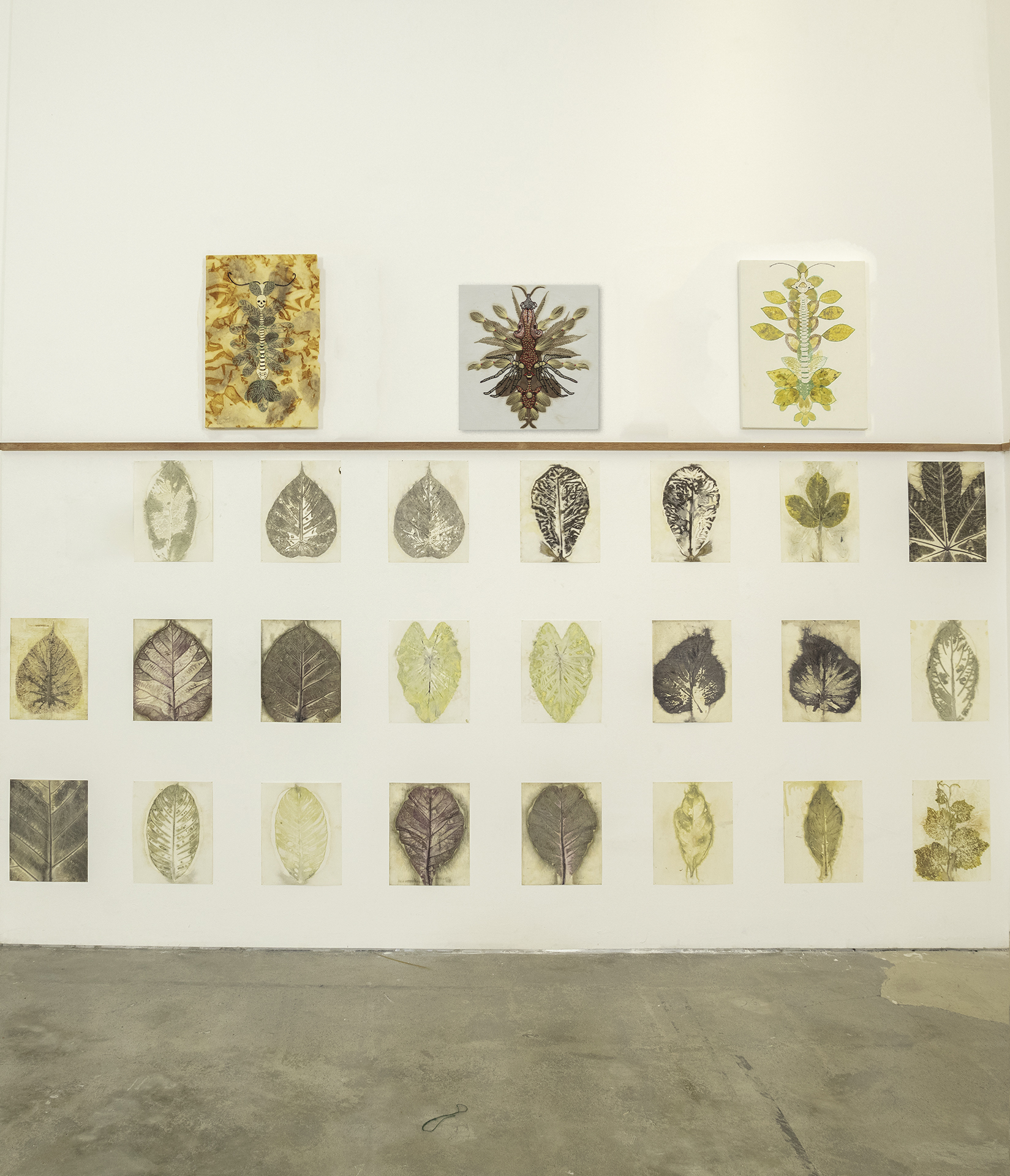
SPI_GJ035
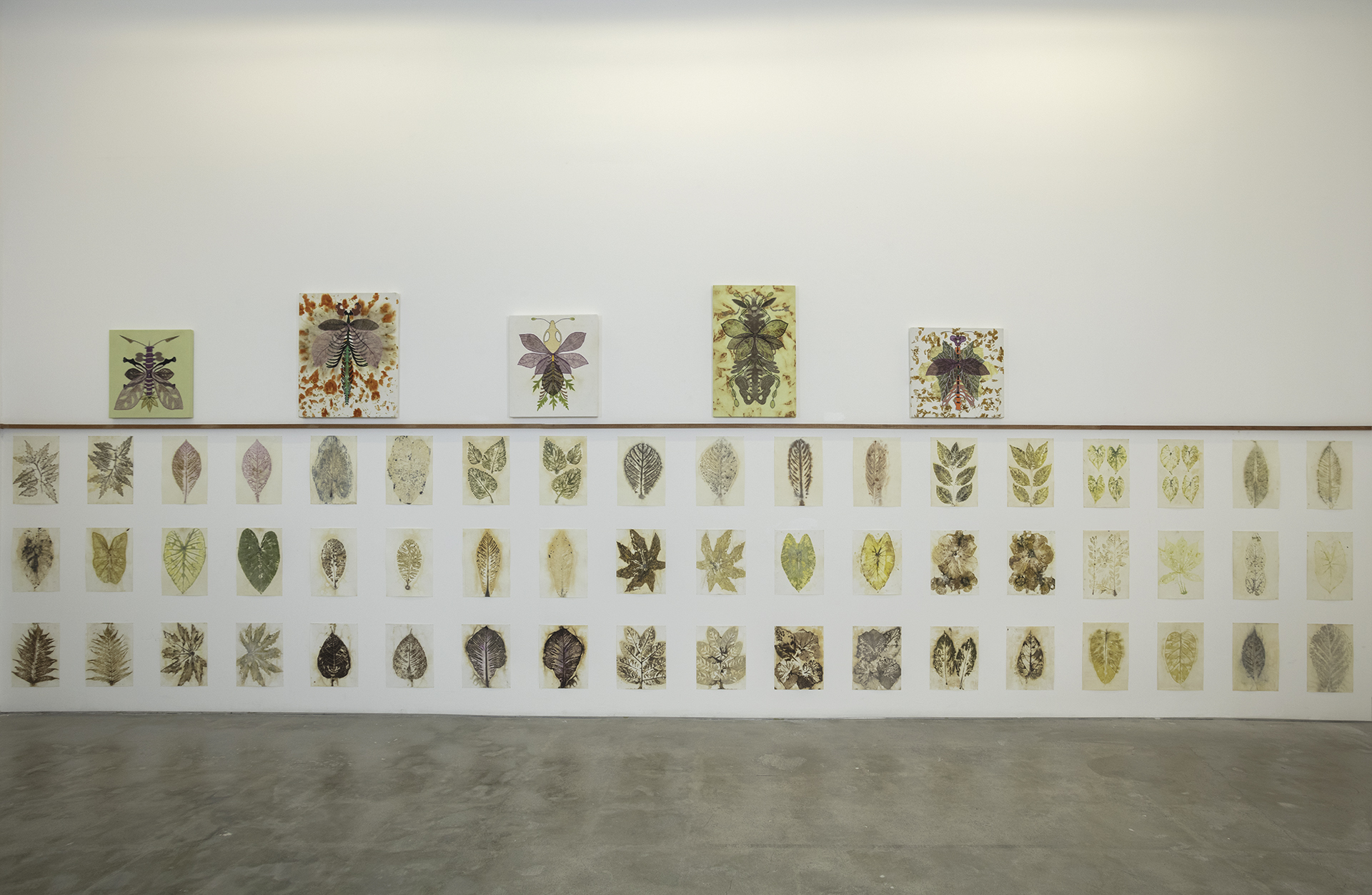
SPI_GJ033
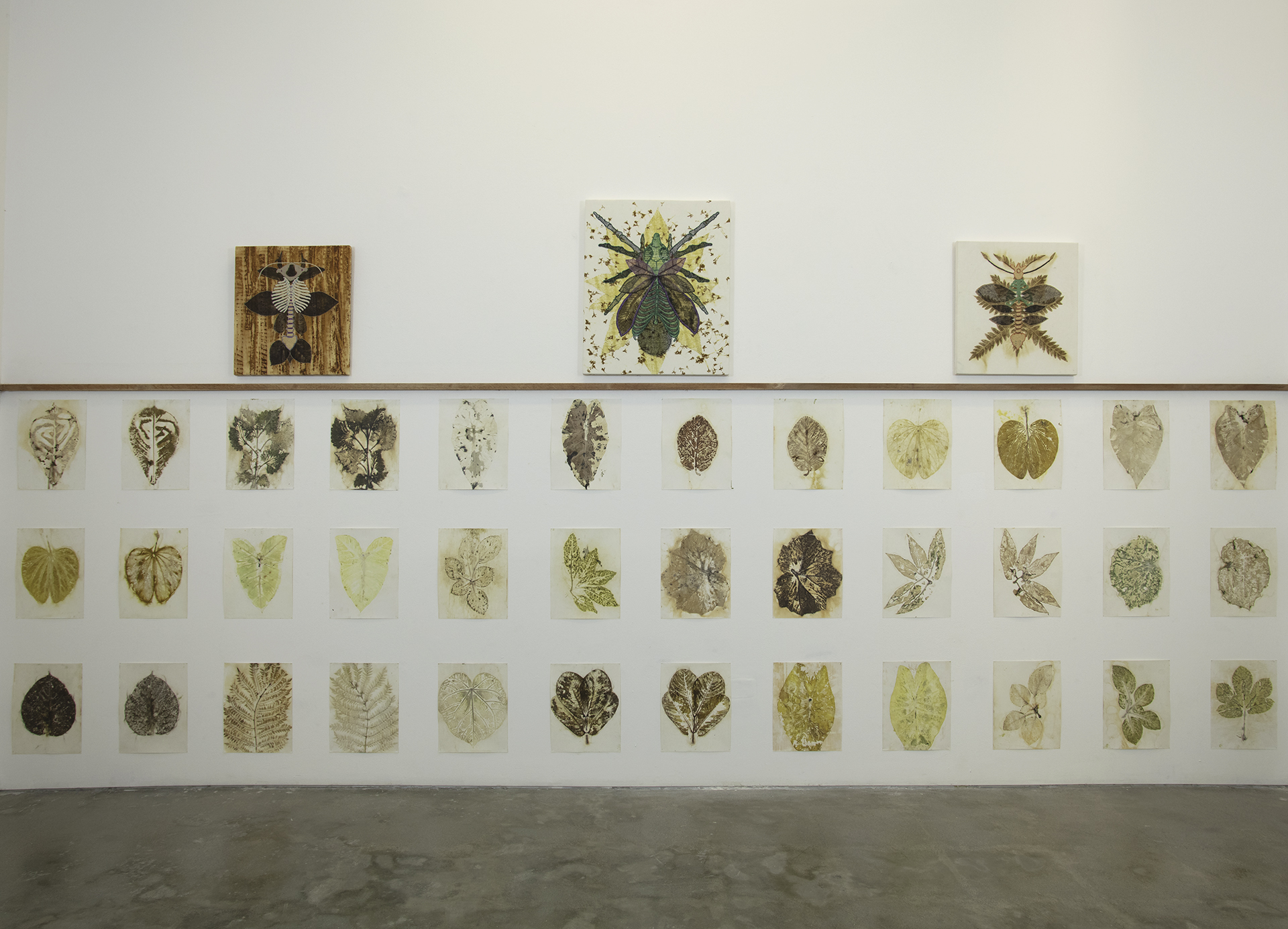
SPI_GJ034
